
Dive Deeper
Latest Articles

Oxytocin
HRV
Cardiovascular Health
Anti-Inflammation
Understanding HRV as a Real-Time Marker of Neural Responsiveness. How Does Oxytocin Change the Signal?
Heart rate variability (HRV) has quietly become one of the most tracked—yet least understood—physiological metrics in modern health and longevity circles. Often interpreted as a marker of parasympathetic activity and recovery, HRV offers a real-time window into the dynamic interplay between sympathetic arousal (“fight or flight”) and parasympathetic restoration (“rest and digest”). But the idea that “higher is always better” fails to capture HRV’s complexity. In this comprehensive review, Dr. Anthony G. Pinzone—a researcher specializing in autonomic function—takes a closer look at how HRV is generated, what it reveals about nervous system balance, and how to interpret changes over time. Beyond stress tracking, HRV emerges as a sensitive biomarker of progress: of improved vagal tone, adaptive engagement, and overall physiological resilience. The article explores HRV’s connections to inflammation, aging, and healthspan—highlighting how low HRV is often linked to increased inflammatory burden and autonomic rigidity. It also examines the evolving role of oxytocin, a neuromodulator that expands our understanding of HRV itself. Research shows that oxytocin enhances adaptive engagement. Depending on the context, it can either increase parasympathetic activity or amplify sympathetic arousal—especially in response to social or emotionally relevant stimuli. In other words, oxytocin isn’t simply sedating; it prepares the nervous system to respond—to stimuli, to stress, to people, and to one’s environment. This review offers scientific grounding and clinical insight, positioning HRV not just as a reflection of calm, but as a lens into how the nervous system adapts, recovers, and evolves over time.
June 27th, 2025

mTOR
sglt2
Aging
Anti-Inflammation
glp-1
longevity
rapamycin
AMPK
The Case for Cyclical Longevity Protocols: How Rhythmic Activation of AMPK and Autophagy Reprograms Aging Cells
A growing body of research in aging biology highlights the central role of nutrient-sensing pathways—particularly AMPK and mTOR—in regulating cellular repair, metabolism, and longevity. While many healthspan interventions aim to chronically activate AMPK or suppress mTOR to stimulate autophagy and metabolic resilience, emerging evidence suggests that constant manipulation of these pathways may lead to diminishing returns, physiological adaptation, or unintended side effects. This review synthesizes findings from preclinical and clinical studies on the cyclical modulation of AMPK and mTOR, exploring how rhythmic engagement—rather than sustained intervention—more effectively promotes mitochondrial biogenesis, proteostasis, and immune balance. We examine the mechanistic rationale for periodic activation of autophagy via fasting, pharmacologic agents like rapamycin and berberine, and time-restricted nutrient interventions. Studies on intermittent rapamycin dosing and pulsed AMPK activation are presented alongside biomarker-based strategies to tailor these cycles to individual physiology. Finally, we introduce Healthspan’s Cellular Renewal Stack, a translational application of these principles. This dual-phase protocol alternates between autophagy induction and AMPK-driven mitochondrial support to mirror the body’s natural rhythm of stress and recovery. The review concludes by proposing a framework for integrating biomarker-guided cycling into personalized longevity protocols, emphasizing the importance of timing, adaptability, and feedback over chronic stimulation.
June 21st, 2025
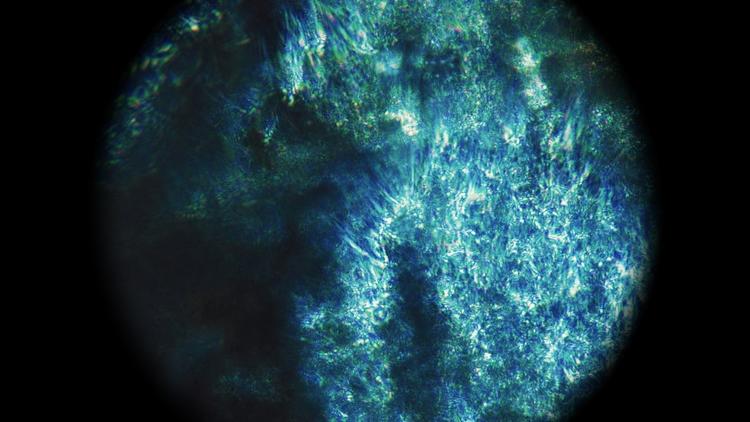
Oxytocin
Aging
Epigenome
Biological Clocks
How Stress Alters DNA Methylation to Accelerate Biological Age — and How Oxytocin May Modulate This Epigenetic Pathway
Biological age, as measured by epigenetic clocks, reflects the functional integrity of cells and tissues and may shift in response to acute physiological stress. This review, led by Dr. Aaron Slusher of the Yale School of Medicine, examines recent evidence showing that stressors such as surgical trauma, pregnancy, and severe infection can transiently accelerate biological aging—effects that often reverse during recovery. A key mechanism may involve glucocorticoid-responsive regions of the genome, which overlap with DNA methylation sites used in aging clocks and are influenced by stress hormones like cortisol. The article also explores interventions that promote stress resilience, including behavioral strategies and emerging pharmacological approaches such as oxytocin, which has been shown to reverse stress-related methylation changes and support physiological recovery. These findings suggest that biological age is not fixed but dynamically shaped by the body’s response to stress, with implications for healthspan and aging interventions.
June 13th, 2025

sglt2
mitochondrial health
Cognitive Health
Neurological Health
Alzheimer's
The Energy Equation in Alzheimer’s Disease: Glucose-Driven Degeneration and Ketone-Driven Protection
Alzheimer’s Disease (AD) is traditionally defined by the accumulation of amyloid-beta (Aβ) plaques and tau tangles, but mounting evidence points to a more fundamental disruption: impaired brain energy metabolism. Long before cognitive symptoms emerge, neurons in vulnerable regions exhibit insulin resistance and reduced glucose utilization—features that mirror metabolic dysfunction in type 2 diabetes and suggest a systemic bioenergetic crisis. This review explores how impaired glucose metabolism contributes to oxidative stress, mitochondrial dysfunction, and protein misfolding in AD, and examines ketones as an alternative energy substrate capable of bypassing these bottlenecks. Unlike glucose, ketones do not require insulin or glycolysis, and can be directly oxidized to support mitochondrial ATP production. Experimental studies demonstrate that ketones preserve mitochondrial function, reduce Aβ accumulation, suppress inflammatory signaling, and support autophagy and proteostasis. Taken together, these findings support the emerging view of AD as a disorder of metabolic inflexibility, and highlight the therapeutic potential of restoring ketone metabolism as a strategy to slow or modify disease progression.
June 7th, 2025

long COVID
mitochondrial health
mitophagy
Methylene Blue
sglt2
urolithin a
Biomarkers
Neurological Health
rapamycin
The Mitochondrial Signature of Long COVID: What PRDX3 Is Trying to Tell Us—And How We Might Reverse It
Long COVID presents with a complex constellation of persistent symptoms—fatigue, brain fog, muscle weakness—that often occur despite unremarkable findings on conventional tests. Emerging evidence suggests that these symptoms may be driven by sustained mitochondrial dysfunction. One of the most compelling new biomarkers in this context is peroxiredoxin-3 (PRDX3), a mitochondrial antioxidant enzyme found at elevated levels in the blood of long COVID patients. This aberrant presence of PRDX3 implicates impaired mitochondrial quality control and chronic oxidative stress as central features of the condition. In this review, we examine the role of PRDX3 as a signal of mitochondrial distress, explore how disrupted mitophagy and redox imbalance perpetuate symptom burden, and discuss therapeutic candidates that target mitochondrial health—including Urolithin A, rapamycin, methylene blue, and elamipretide. By understanding long COVID through the lens of mitochondrial dysfunction, we uncover broader insights into other fatigue-related conditions marked by cellular energy failure.
May 30th, 2025

The Surprising Role of Belly Fat in Metabolic Health
Emerging evidence challenges the blanket vilification of “belly fat” by highlighting the distinct metabolic role of abdominal subcutaneous adipose tissue (Ab-SAT). In this episode, Dr. Richard LaFountain and Dr. Aaron Slusher discuss new research showing that, when functioning properly, Ab-SAT serves as a metabolic buffer—absorbing excess lipids, limiting ectopic fat deposition, dampening inflammation, and preserving insulin sensitivity. They outline how specific exercise modalities not only reduce adiposity but remodel Ab-SAT into a more metabolically active tissue, thereby enhancing systemic flexibility and resilience. Understanding these depot-specific adaptations reframes fat-loss strategies: success hinges not merely on quantity lost, but on the functional quality of the remaining adipose tissue. This perspective offers practical insights for mitigating metabolic disease risk and promoting longevity.
May 29th, 2025
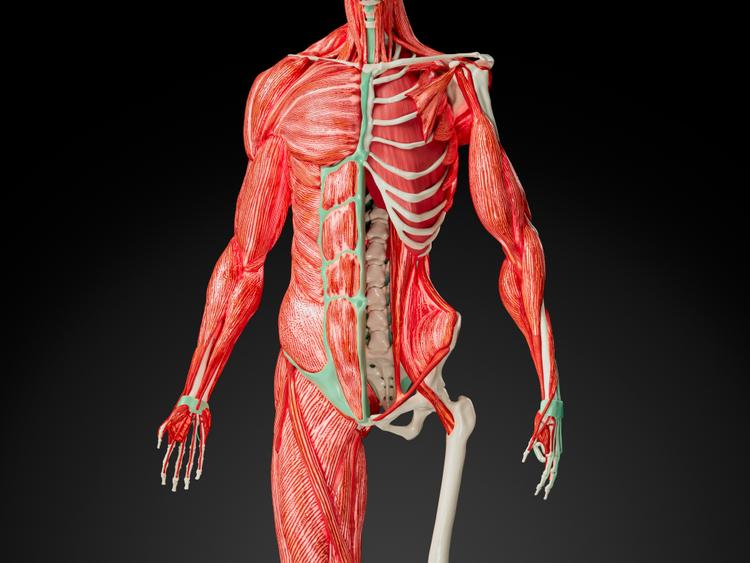
Muscle Mass
mitochondrial health
Biomarkers
Anti-Inflammation
Cellular Senescence
The Molecular Effects of Resistance Training on Aging Muscle and Senescent Cell Burden
For decades, muscle loss was viewed as an inevitable byproduct of aging—an aesthetic concern or athletic obstacle. But emerging research reveals a deeper truth: skeletal muscle is a central regulator of aging, capable of influencing inflammation, metabolism, and even the clearance of dysfunctional, senescent cells. In this Research Review, Dr. Richard LaFountain, Healthspan’s Senior Scientist, explores how resistance training functions as a molecular intervention—stimulating immune responses, enhancing mitochondrial health, and reducing the burden of cellular senescence in both muscle and fat tissue. Drawing from recent preclinical and human studies, he also introduces the concept of backcasting: a strategy for planning present-day strength goals to preserve physical function decades into the future. The message is clear—regardless of age, resistance training offers one of the most powerful tools we have to extend not just lifespan, but strengthspan.
May 24th, 2025

rapamycin
Rewiring the Brain’s Fullness Signal: Rapamycin’s Role in Leptin Sensitivity
For decades, obesity was thought to be a matter of willpower and calories. But emerging science tells a more complex story—one in which the brain misreads the body's own biochemical signals. At the center of this miscommunication is leptin, a hormone secreted by fat cells and the stomach that normally tells the brain, you’ve had enough. In both obesity and aging, this message becomes garbled. The brain no longer responds, appetite surges, and weight gain follows—a phenomenon known as leptin resistance. Now, a new study has identified a surprising culprit: mTOR, a nutrient-sensing pathway that becomes overactive in the hypothalamus during obesity. When mTOR is overengaged in specific neurons known as POMC neurons, the brain can no longer interpret leptin’s signal. But the researchers also discovered a potential way to reset this errant signaling. In their experiments, daily treatment with rapamycin—an mTOR inhibitor better known for its role in aging research—restored leptin sensitivity, reduced food intake, and helped obese mice shed fat mass without compromising lean tissue. In this Research Review, Dr. Aaron Slusher, a research scientist at the Yale School of Medicine, unpacks the implications of this work. While the rapamycin dose used in animal models was higher than typical human longevity protocols, the findings reveal a compelling, brain-based mechanism through which rapamycin may improve metabolic health. The research opens the door to future studies testing whether lower, intermittent dosing might offer a novel strategy to reverse leptin resistance and address one of the core drivers of obesity.
May 17th, 2025

Muscles, Memory, and the Aging Brain: A Story of Two Systems
Every three seconds, someone in the world develops dementia—a statistic that underscores the urgency of understanding its underlying causes and potential preventive strategies. While dementia is often approached as a brain-centered disorder, emerging research suggests that the condition of our muscles may play a more central role than previously recognized. Sarcopenia, the age-related loss of skeletal muscle mass and function, has long been associated with physical decline in older adults. However, its potential impact on cognitive health is only beginning to be understood. This review examines findings from a longitudinal study led by Dr. Stephanie Chevalier and colleagues at McGill University, using data from the Canadian Longitudinal Study on Aging. The researchers tracked changes in appendicular lean mass and cognitive function over three years in a cohort of community-dwelling adults. Their results reveal notable associations between low muscle mass and declines in memory, executive function, and psychomotor speed. We also explore the biological mechanisms that may connect muscle and brain health, particularly the role of muscle-derived signaling molecules such as brain-derived neurotrophic factor (BDNF), interleukin-6 (IL-6), and insulin-like growth factor-1 (IGF-1). These myokines offer a compelling framework for the emerging concept of the muscle-brain axis, where muscle tissue acts not only as a mechanical system but also as an endocrine organ influencing cognitive resilience.
May 10th, 2025

How Endogenous Fructose Fuels Inflammation and Accelerates Aging
In this episode of the Healthspan Research Podcast, Dr. Rich LaFontaine and Brandon Fell, MS, explore the overlooked role of endogenous fructose production—a process triggered by the polyol pathway during periods of metabolic stress, even in the absence of dietary fructose. Their discussion highlights emerging research linking this internal pathway to hallmarks of metabolic dysfunction and accelerated biological aging.
May 8th, 2025

Methylene Blue
mitochondrial health
Neurological Health
Methylene Blue for the Aging Brain: Mitochondrial Mechanisms Driving Neuroprotective and Cognitive Benefits
Methylene blue, originally synthesized in the late 19th century as a textile dye, has emerged over the past few decades as a fascinating agent of neuroprotection and neuroenhancement. At the cellular level, methylene blue acts as a redox mediator, capable of bypassing dysfunctional segments of the electron transport chain to sustain ATP production and reduce reactive oxygen species. This mechanistic foundation, clarified by the pioneering work of Dr. Francisco Gonzalez-Lima and colleagues at The University of Texas at Austin, catalyzed a resurgence of interest in the compound’s hormetic and neurometabolic effects. Since then, mounting evidence—ranging from cellular assays to animal models and preliminary clinical findings—has unveiled methylene blue’s potential to support memory consolidation, diminish neurotoxic byproducts, and safeguard neurons in conditions such as Alzheimer’s disease, tauopathies, and ischemia/reperfusion injury. These effects are attributed to its dual role as both an antioxidant and a mitochondrial electron cycler, particularly under conditions of metabolic stress. In this narrative review, we synthesize the key biochemical mechanisms, highlight critical safety considerations regarding dose and purity, and discuss the compound’s targeted applications in neurological and psychiatric settings. While large-scale randomized trials remain necessary, current findings position methylene blue as a compelling, if unconventional, candidate in the evolving toolkit of neuroprotective therapeutics—functioning, in essence, as a cellular “battery charger” that supports brain resilience.
May 3rd, 2025

sglt2
mitochondrial health
mTOR
Aging
autophagy
longevity
Pharmacological Fasting: How SGLT-2 Inhibitors Emulate Caloric Restriction to Target Key Longevity Pathways
Caloric restriction has long been the gold standard for switching cells into a repair-and-preserve mode, yet few of us can sustain it. This week’s Research Review explores how SGLT-2 inhibitors—best known for lowering blood glucose—appear to nudge the same nutrient-sensing circuitry engaged by fasting. By siphoning roughly 60–80 g of glucose into the urine each day—creating a mild, chronic energy deficit akin to a continuous mini-fast— these agents engage four of the field’s most studied longevity pathways: they activate the energy sensors AMPK and SIRT1, dampen the pro-growth mTOR and insulin/IGF-1 axes, and—through this coordinated shift—trigger autophagy and mitochondrial renewal. Through these effects, SGLT-2 inhibitors may promote metabolic flexibility, enhance cellular maintenance processes such as autophagy, and mitigate pathways associated with aging and age-related disease. While early findings are promising, dedicated clinical studies are needed to clarify the long-term implications of SGLT-2 inhibition for human healthspan and longevity. This emerging area of research underscores the potential of metabolic reprogramming as a strategy for promoting healthy aging.
April 26th, 2025

Exercise
Anti-Inflammation
health
science
longevity
The Surprising Role of Abdominal Subcutaneous Fat as a Metabolic Buffer—And How Endurance Training Re‑Programs It
Belly fat has earned a notorious reputation associated with looming health risks. But when we look closer, we discover a surprising twist: not all belly fat is the enemy. Specifically, the soft, pinchable layer just below the skin—known as abdominal subcutaneous adipose tissue (abSAT)—can actually play a protective role. Picture abSAT as your body’s energetic “savings account”: when you’re not eating, it breaks down stored fat to power the body; when you do eat, insulin steps in to curtail that breakdown and encourage new fat storage. This constant give-and-take is part of a finely tuned system that keeps metabolism running smoothly—until obesity complicates the picture. For many, the inability of abSAT to properly store fat leads to a detrimental spillover of lipids into other tissues, contributing to insulin resistance and chronic disease. Yet here’s the paradox: some people with obesity remain remarkably healthy, suggesting that their abSAT expands without jeopardizing insulin signaling or metabolic balance. In this review, we follow the thread of new research unveiling how regular endurance exercise helps abSAT stay flexible in individuals with obesity. We’ll explore how increased capillary density, reduced fibrosis, and a more favorable immune cell environment allow abSAT to function as a stable reservoir for fat—even under the strain of extra weight. Finally, we’ll introduce specific endurance exercise strategies shown to nurture this healthy fat storage capacity across the lifespan, reframing our understanding of belly fat from a universal villain to a potential metabolic ally.
April 18th, 2025

When Hormones Shift the Brain’s Set Point: Rewiring of Hypothalamic Circuits in Perimenopause and Evidence-Based Strategies to Counter It
Perimenopause, a transitional phase preceding menopause, is increasingly recognized as a distinct and hormonally dynamic stage marked by metabolic, emotional, and reproductive changes. This review explores the neuroendocrine underpinnings of perimenopause, focusing on the role of estrogen and progesterone in modulating hypothalamic circuits that govern appetite, energy expenditure, and menstrual regularity. Experimental studies in animal models reveal how declining estrogen signaling through estrogen receptor alpha (ERα) in specific hypothalamic neurons contributes to weight gain and metabolic dysregulation, while clinical research highlights progesterone’s essential role in maintaining endometrial stability. Drawing on both mechanistic insights and large-scale interventions, we examine evidence-based strategies—including tailored nutrition, structured exercise, and hormone therapy—to mitigate the most common perimenopausal symptoms and support long-term health during this pivotal life stage.
April 11th, 2025

Neurological Health
Alzheimer's
Methylene Blue
mitochondrial health
Beyond Plaques: How Methylene Blue and Ketones Address Vascular-Hypometabolism in Alzheimer’s Disease
Alzheimer’s disease (AD) is often associated with amyloid plaques and neurofibrillary tangles, yet growing evidence supports a vascular-hypometabolism hypothesis in which cerebral hypoperfusion and mitochondrial dysfunction—particularly at the level of cytochrome c oxidase—drive early disease processes. Research led by Dr. Francisco Gonzalez-Lima highlights pronounced deficits in oxidative energy production within critical brain regions such as the posterior cingulate cortex, correlating with cognitive decline and disease duration. These findings challenge the predominant amyloid-centric model by emphasizing the role of impaired blood flow and metabolic failure. Consequently, interventions targeting these core vulnerabilities—including methylene blue, ketone-based therapies, and near-infrared light—show promise in restoring mitochondrial function, enhancing oxygen utilization, and potentially slowing AD progression. By reframing AD as a hypometabolic disorder rooted in vascular and mitochondrial insufficiencies, new prevention and treatment strategies may outperform traditional approaches focused primarily on amyloid pathology.
April 5th, 2025

Volume or Intensity? A Systematic Review and Meta-Regression of How Exercise Influences Mitochondrial Content, Capillarization, and Aerobic Capacity
For years, athletes, coaches, and researchers have debated whether a hefty training volume or a focus on high-intensity efforts most effectively drives improvements in mitochondrial function, aerobic performance, and overall metabolic health. In this research review, we explore a comprehensive meta-regression analysis that synthesizes data from nearly 6,000 participants, aiming to dissect exactly which training variables matter—and why previous studies have often offered conflicting insights. By investigating how workout intensity, session frequency, and baseline fitness affect key adaptations like mitochondrial biogenesis, capillary density, and VO₂ max, this review provides a clearer picture of how to tailor exercise for both short-term performance gains and long-term health benefits. The findings are particularly meaningful for those looking to optimize mitochondrial function—a cornerstone of metabolic efficiency—and potentially extend healthy lifespan. Whether it’s integrating short, high-intensity intervals or dedicating longer sessions to low-to-moderate endurance training, striking the right balance between volume and intensity emerges as the linchpin of evidence-based exercise prescriptions.
March 29th, 2025

BMI, Body Composition, and Longevity: Rethinking the Metrics of Health
Body Mass Index (BMI) has long been used as a simple tool to assess body weight relative to height. While its utility in population health studies is well documented, its relevance as an individual health metric—particularly in relation to longevity—has been increasingly questioned by clinicians and researchers. This research review explores the utility and controversy surrounding BMI in an era of advanced pharmacological approaches to weight loss. It then examines the relationship between BMI and longevity before considering potential alternatives or complementary indices that may improve how health and longevity are assessed for individuals and large populations alike.
March 22nd, 2025

mitochondrial health
Biomarkers
science
Harnessing Chronobiology for Metabolic Health: The Role of Brown Fat and Circadian Rhythms
Circadian rhythms regulate numerous physiological processes, including metabolism, and their disruption is increasingly linked to obesity, insulin resistance, and metabolic disorders. Concurrently, brown adipose tissue (BAT) has emerged as a key player in metabolic health, capable of burning calories through thermogenesis and significantly influencing glucose and lipid metabolism. Recent evidence indicates that BAT activity is strongly influenced by circadian timing, exhibiting diurnal fluctuations that peak in the morning. This review explores the intersection of circadian biology and brown adipose tissue, examining studies demonstrating enhanced morning thermogenic activity, and detailing how meal timing, cold exposure, and melatonin cycles modulate this relationship. Molecular insights into clock gene expression (e.g., CLOCK, BMAL1) and thermogenic proteins (e.g., UCP1) underscore how circadian rhythms orchestrate metabolic efficiency. Practical interventions—such as morning cold exposure, optimized feeding windows, and controlled light-dark exposure—are discussed as strategies for harnessing chronobiological patterns to activate brown fat, improve glucose and lipid metabolism, and enhance overall metabolic health. Finally, we highlight ongoing research gaps, including the need for sex-specific protocols, clinical feasibility of circadian interventions, and long-term metabolic outcomes.
March 15th, 2025

sglt2
Cardiovascular Health
mitochondrial health
Acarbose
Aging
Anti-Inflammation
Cellular Senescence
SGLT2 Inhibitors as Metabolic Senolytics: Clearing Senescent Cells to Combat Pathological Aging
Senescent cells accumulate during aging and chronic disease, promoting systemic inflammation, tissue dysfunction, and accelerated aging through the senescence-associated secretory phenotype (SASP). Recent evidence suggests that sodium-glucose cotransporter 2 (SGLT2) inhibitors, a widely prescribed class of antidiabetic medications, may exhibit senolytic properties by enhancing immune-mediated clearance of senescent cells. In this review, we critically analyze recent findings from preclinical studies published in Nature Aging demonstrating that short-term canagliflozin treatment significantly reduces senescent cell burden across multiple tissues, independent of its glucose-lowering effects. Mechanistic analyses revealed that SGLT2 inhibitors do not directly induce senescent cell apoptosis but instead facilitate clearance through a metabolic reprogramming pathway driven by AMP-activated protein kinase (AMPK) activation. Furthermore, canagliflozin treatment was shown to downregulate programmed death-ligand 1 (PD-L1) expression on senescent cells, restoring immune surveillance by natural killer (NK) and CD8+ T cells. These mechanisms highlight a novel indirect senolytic approach distinct from existing therapies, suggesting that SGLT2 inhibitors could function synergistically with other longevity-promoting compounds such as rapamycin and traditional senolytics. We conclude by discussing the broader implications of combining SGLT2 inhibitors with established metabolic and senolytic interventions to optimize healthspan and mitigate age-related diseases.
March 8th, 2025

Muscle Mass
mitochondrial health
Exercise
Reevaluating Midlife Metabolic Decline: A Four-Factor Framework Integrating Muscle, Mitochondrial Function, Hormones, and Inflammation
Conventional wisdom suggests that midlife heralds an inevitable collapse in metabolic rate, yet a growing body of evidence challenges this narrative. Large-scale, doubly labeled water studies reveal that total energy expenditure holds relatively steady through adulthood until approximately age 60, when it gradually begins to decline. This narrative review synthesizes emerging evidence on the critical contributions of skeletal muscle mass, mitochondrial function, and chronic low-grade inflammation to age-related metabolic changes. While age-related muscle loss (sarcopenia) partly explains modest declines in resting metabolic rate, contemporary studies also underscore a deterioration in mitochondrial efficiency—observed as reduced fat oxidation capacity and heightened metabolic inflexibility—as a key yet underappreciated driver. Chronic inflammation further undermines metabolic processes through heightened insulin resistance and impaired cellular energy production. Drawing on recent clinical and mechanistic research, we discuss current methodologies for quantifying metabolic rate, including indirect calorimetry and doubly labeled water, and explore targeted interventions aimed at preserving mitochondrial integrity and muscle mass. Collectively, these findings underscore the multifaceted nature of metabolic aging and highlight the value of a precision-based approach that targets both skeletal muscle function and mitochondrial health to maintain robust energy expenditure across the lifespan.
February 28th, 2025

Plasmalogens and Cognitive Longevity: A Lipid-Centric Perspective on Dementia Risk
Plasmalogens are a specialized class of phospholipids marked by a vinyl ether bond that confers heightened resistance to oxidative stress and renders them crucial for brain, heart, and overall organ function. Emerging data—highlighted by the Rush University Memory and Aging Project—reveal strong correlations between higher plasmalogen levels and reduced dementia risk, suggesting a key role for these lipids in cognitive longevity. Mechanistically, plasmalogens bolster membrane stability, modulate mitochondrial efficiency, and mitigate inflammation through reactive oxygen species (ROS) scavenging. Age-related plasmalogen depletion has been associated with neurodegenerative diseases such as Alzheimer’s and Parkinson’s, as well as cardiovascular and inflammatory disorders. Accordingly, restoring plasmalogen levels—via targeted supplementation, lifestyle interventions (e.g., exercise, diet, fasting), and peroxisomal health optimization—may offer a promising avenue for preventing or attenuating cognitive decline. This review synthesizes current findings on plasmalogen biosynthesis, function, and clinical implications, advocating for deeper exploration in large-scale human trials to clarify optimal dosing strategies and establish plasmalogens as a pivotal component of healthy aging initiatives.
February 15th, 2025

Alzheimer’s Disease as Type 3 Diabetes: Evidence for Insulin Resistance and Metabolic Dysfunction as Drivers of AD Pathogenesis
Over the past several decades, Alzheimer’s disease (AD) has been predominantly explained through the lens of amyloid-beta plaques and neurofibrillary tangles, yet an emerging paradigm shift increasingly recognizes metabolic dysfunction—specifically, insulin resistance—as a key driver of AD. Central to this shift are compelling findings from postmortem analyses of AD brains, which consistently reveal diminished insulin and insulin-like growth factor (IGF) activity, reduced insulin receptor density, and heightened markers of insulin resistance, suggesting the brain undergoes a “Type 3 Diabetes,” marked by profound metabolic deficits independent of systemic type 2 diabetes. These postmortem discoveries have reshaped our understanding of how AD may originate and progress; rather than viewing amyloid and tau pathology as isolated triggers, we now see them as intertwined with—and possibly exacerbated by—impaired glucose metabolism in neurons. This insight has profound implications: if insulin resistance lies at the heart of neuronal energy failure and subsequent neurodegeneration, interventions aimed at restoring metabolic function could prevent or slow the course of AD. Bolstered by experimental models demonstrating that artificially induced brain insulin resistance spurs the same pathological hallmarks observed in AD, researchers have begun to explore insulin-sensitizing drugs, as well as interventions targeting metabolic pathways and optimizing mitochondrial function, as potential therapies. Early human trials showing cognitive benefits from intranasal insulin further reinforce the idea that correcting metabolic dysfunction may improve or stabilize memory. In this way, the field is moving beyond a purely amyloid-centric view toward a holistic understanding of AD as, at least in part, a metabolic disorder, underscoring that by emphasizing insulin signaling and glucose homeostasis, we may uncover new opportunities for prevention, intervention, and a more optimistic outlook on this devastating disease.
February 8th, 2025

mitochondrial health
Emergence of Specialized Mitochondrial Networks: A ‘Divide and Conquer’ Strategy for Metabolic Demands
Mitochondria, often portrayed as mere “powerhouses,” are increasingly recognized for their dual ability to fuel ATP production while orchestrating essential biosynthetic tasks. Recent evidence reveals that within a single cell, specialized mitochondrial subpopulations can simultaneously prioritize high-efficiency oxidative phosphorylation and the synthesis of critical building blocks—such as proline and ornithine—through enzymes like pyrroline-5-carboxylate synthase (P5CS). This functional “divide and conquer” strategy supports rapid adaptation to fluctuating nutrient conditions and underscores the evolutionary origins of these versatile organelles. In this review, we examine how these specialized mitochondrial networks form, their structural features, and the ways in which their imbalance contributes to diseases ranging from type 2 diabetes to cancer and neurodegeneration. By uniting insights from evolutionary biology, cell physiology, and clinical research, we highlight novel therapeutic avenues aimed at recalibrating mitochondrial subpopulations and restoring metabolic homeostasis.
February 1st, 2025

sglt2
urolithin a
mitochondrial health
Exercise
cancer prevention
metformin
rapamycin
Mitochondria’s Paradoxical Role in Cancer Biology: Exploiting Metabolic Vulnerabilities for Therapeutic Targeting
Mitochondria, known for their critical role in energy production, oxidative stress regulation, and apoptosis, occupy a paradoxical position in cancer biology. While they act as protectors of cellular integrity in healthy tissues, preventing tumorigenesis by maintaining metabolic homeostasis and removing damaged cells, cancer cells exploit mitochondrial functions to fuel tumor growth, support biosynthesis, and evade apoptosis. This review explores the dual role of mitochondria in cancer prevention and progression, highlighting recent advancements in understanding their contributions to tumor metabolism and resilience. It examines the Warburg effect and its interplay with mitochondrial activity, emphasizing the metabolic flexibility that enables cancer cells to thrive in diverse microenvironments. The potential for therapeutic interventions targeting mitochondrial processes is discussed, with a focus on agents such as Rapamycin and Urolithin A, which enhance mitophagy and regulate autophagy, as well as SGLT2 inhibitors, which limit glucose availability and modulate oxidative stress. These interventions offer promising strategies for preventing cancer through mitochondrial optimization while disrupting mitochondrial adaptations in established tumors. By integrating mitochondrial biology into cancer prevention and treatment frameworks, this evolving field presents significant opportunities for advancing personalized medicine and improving health outcomes.
January 25th, 2025

sglt2
Muscle Mass
mitochondrial health
Cardiovascular Health
Exercise
Aging
Anti-Inflammation
SGLT-2 Inhibitors in Aging and Healthspan: Surprising Mechanistic Insights Into Adipose Tissue Reduction, Lean Mass Preservation, and Longevity
SGLT-2 inhibitors, initially developed for type 2 diabetes management, have garnered attention from the longevity research community following compelling findings from the NIA’s Intervention Testing Program, which reported a 14% lifespan extension in male animal models. This review critically evaluates the science underpinning these findings, focusing on the mechanisms through which SGLT-2 inhibitors influence metabolic health and aging pathways. By promoting visceral fat reduction, lean mass preservation, adipose tissue browning, and reductions in systemic inflammation, these agents address hallmarks of aging that drive metabolic and cardiovascular dysfunction. Their potential geroprotective benefits are further supported by evidence of enhanced mitochondrial function and metabolic flexibility. Comparative analyses with GLP-1 receptor agonists emphasize the importance of targeting root causes of aging-related decline rather than isolated metrics such as weight loss. As research continues to uncover their broader applications, SGLT-2 inhibitors emerge as a promising intervention for improving healthspan and mitigating age-related diseases, with this review offering a framework for understanding their potential through mechanistic evaluation.
January 18th, 2025
.jpg?u=https%3A%2F%2Fimages.ctfassets.net%2Fzvzqa1d1gh0f%2F42C3QqrTCjx2PXagQZYUX9%2Fc9c2bed94d0df08d93aa4564df0b87f0%2FiStock-512755468__1_.jpg&a=w%3D591%26h%3D591%26fm%3Djpg%26q%3D75&cd=2025-01-12T03%3A49%3A49.959Z)
urolithin a
Gut Microbiome
Muscle Mass
mitochondrial health
Cardiovascular Health
Anti-Inflammation
mitophagy
rapamycin
Connecting mTOR and Mitochondria: The Novel Synergy Between Rapamycin and Urolithin A
Aging is characterized by the progressive decline of cellular maintenance systems, including autophagy and mitophagy, which contribute to the accumulation of damaged proteins, dysfunctional organelles, and oxidative stress. These processes play pivotal roles in cellular quality control, with autophagy serving as a broad recycling system and mitophagy specifically targeting mitochondrial dysfunction. This review examines the complementary mechanisms of action of Rapamycin, an mTOR inhibitor that broadly enhances autophagy and mitigates chronic inflammation, and Urolithin A, a dietary metabolite that selectively activates mitophagy to restore mitochondrial health. By analyzing findings from clinical and preclinical studies, we highlight the potential synergy of these interventions in targeting age-related pathologies across major organ systems, including the brain, muscles, and metabolic tissues. Together, Rapamycin and Urolithin A offer a promising dual approach to addressing the cellular and mitochondrial underpinnings of aging, providing a foundation for therapeutic strategies to improve healthspan and mitigate age-associated decline.
January 11th, 2025

SGLT2 Inhibitors: The Unexpected Longevity Molecules and Their Mechanistic Impact on Aging Science
For decades, scientists have been uncovering compounds like Rapamycin, Metformin, and Acarbose that improve metabolic health and extend lifespan, particularly in rodent studies. Recently, a new class of molecules has emerged as a promising contender in the aging arena: SGLT2 inhibitors. First shown in 2020 by Professor Richard Miller and the NIA's ITP to extend lifespan by an impressive 14%, SGLT2 inhibitors don't just offer more years – they enhance metabolic health and improve body composition in ways that were previously hard to achieve without diet and/or exercise. In this article, we dive into the science behind SGLT2 inhibitors, exploring their effects at the cellular, molecular, and whole-body levels in mice and humans. We'll also discuss how these findings might one day translate to protocols for human longevity, potentially offering new avenues for a healthier, longer life.
December 31st, 2024
_Madeline_Spanier_Photos_ID7429.jpg?u=https%3A%2F%2Fimages.ctfassets.net%2Fzvzqa1d1gh0f%2F1EJDzQrj2aHI8VdfUs8hY3%2F9a8e4ef9849cc00cce9c76f74aae095f%2FDTS_MISC_3__Maddie_Spanier__Madeline_Spanier_Photos_ID7429.jpg&a=w%3D750%26h%3D601%26fm%3Djpg%26q%3D75&cd=2024-12-28T22%3A51%3A52.297Z)
Oxytocin
longevity
Anti-Inflammation
Neurological Health
Social Connection as a Determinant of Longevity: Mechanisms Linking Isolation to Chronic Disease and Aging
Social isolation and loneliness, often framed as societal and emotional challenges, are now recognized as significant biological threats with profound implications for health and aging. This review explores the multifaceted impacts of social disconnection, revealing its links to chronic inflammation, dysregulated gene expression, neuroendocrine dysfunction, and accelerated biological aging. Highlighting evidence from epidemiological studies, molecular biology, and evolutionary frameworks, we examine how social bonds influence cardiovascular health, cognitive function, and immune resilience. The role of the gut microbiome and hormones like oxytocin in mediating these effects is emphasized, offering insights into potential therapeutic interventions. By integrating lifestyle strategies, targeted therapies, and systemic approaches, this review underscores the necessity of addressing social isolation as a critical determinant of healthspan and longevity, aligning modern health strategies with the biological imperatives of human sociality.
December 28th, 2024

Neurological Health
mitochondrial health
Cardiovascular Health
Cognitive Health
longevity
The Metabolic Basis of Neurodegeneration: The Glucose Paradox of Fueling Cognition and Driving Decline
The brain’s reliance on glucose as its primary energy source underscores the critical role of metabolic regulation in maintaining cognitive function and resilience against neurodegenerative diseases. This research review explores the multifaceted relationship between glucose dysregulation and brain health, highlighting key mechanisms such as neuroinflammation, oxidative stress, vascular dysfunction, and blood-brain barrier compromise. The contributions of alternative metabolic pathways, including fructose metabolism and ketogenesis, are also examined, with a focus on their dual roles in exacerbating and mitigating cognitive decline. Emerging evidence implicates chronic hyperglycemia and advanced glycation end-products (AGEs) in the progression of Alzheimer’s disease, while disruptions in the gut-brain axis further amplify systemic and neurological dysfunction. Dietary interventions, gut microbiota optimization, and pharmacological strategies targeting glucose regulation are presented as actionable approaches to preserve metabolic stability and cognitive vitality. By integrating recent advances in the understanding of these metabolic pathways, this review underscores the imperative of glycemic control for safeguarding brain health and offers insights into potential therapeutic targets for neurodegenerative diseases.
December 21st, 2024

Targeting the Root Causes of Weight Gain: A Systems Framework for Metabolic Health, Muscle Preservation, and Longevity
GLP-1 receptor agonists (GLP-1 RAs) have demonstrated significant efficacy in promoting fat loss and improving metabolic markers, yet their long-term impact on overall health remains underexamined. Emerging evidence highlights an important limitation: a substantial portion of weight loss achieved with GLP-1 RAs comes from lean body mass, including muscle tissue. This raises concerns regarding their effects on metabolic stability, glucose regulation, and physical resilience. In this review, we adopt a systems-based approach to explore the root causes of weight gain, including insulin resistance, mitochondrial dysfunction, and adipose tissue inflammation, and critically evaluate the role of GLP-1 therapies within this broader metabolic framework. We also discuss the unintended consequences of lean mass loss and propose strategies—such as protein optimization and resistance training—to mitigate these effects, ensuring sustainable metabolic health and longevity.
December 14th, 2024

rapamycin
acarbose
Cellular Senescence
hyperfunction
autophagy
Two Waves of Aging: How Midlife Biomolecular Shifts Accelerate Decline
Aging has long been viewed as a gradual, linear decline, but recent findings suggest a far more dynamic process characterized by distinct biological transitions. This review explores emerging evidence from a longitudinal study that identifies two critical waves of aging occurring in the mid-40s and early 60s. These waves are marked by abrupt, systemic changes in key biological systems, including lipid metabolism, immune function, gut microbiome composition, and carbohydrate metabolism. During the first wave, disruptions in lipid balance, chronic inflammation (inflammaging), and the accumulation of senescent cells drive tissue dysfunction and increase the risk of cardiovascular disease and metabolic syndrome. The second wave, occurring in the early 60s, is characterized by immune senescence, insulin resistance, and declining kidney function, further compounding age-related decline. These findings align with the quasi-programmed aging framework and the evolutionary theory of antagonistic pleiotropy, which suggest that biological pathways optimized for early-life growth and reproduction become maladaptive later in life. This review highlights the potential of geroprotective interventions to recalibrate these developmental pathways, mitigate dysfunction, and extend healthspan. By reframing aging as a series of dynamic waves rather than a linear process, this research highlights opportunities for precision health interventions that address the underlying biological shifts driving age-related disease.
December 7th, 2024

urolithin a
Muscle Mass
mitochondrial health
The Role of Urolithin A in Enhancing Mitochondrial Biogenesis and Muscle Function: Mechanistic and Clinical Insights
Muscle health is essential for physical performance, mobility, and overall quality of life. Aging-associated sarcopenia, characterized by the gradual decline in muscle mass and function, presents a significant challenge, contributing to increased frailty, loss of independence, and heightened risk of chronic diseases. This deterioration is driven by mitochondrial dysfunction, chronic inflammation, oxidative stress, and impaired protein turnover, which collectively compromise muscle integrity and resilience. Athletes and physically active individuals similarly face muscle health challenges, including maintaining recovery capacity and mitigating the cumulative impact of oxidative stress and inflammation. Urolithin A, a naturally occurring metabolite derived from ellagitannins found in certain fruits and nuts, has been the subject of growing interest for its potential to enhance mitochondrial quality control, reduce oxidative stress, and modulate inflammatory pathways. This narrative review evaluates current research regarding Urolithin A’s capacity to target these mechanisms and its implications for improving muscle health. Drawing from preclinical and clinical studies, this review aims to provide a comprehensive understanding of Urolithin A’s role in muscle strength, endurance, and recovery while identifying gaps and future directions for research.
November 30th, 2024

rapamycin
Anti-Inflammation
long COVID
The Surprising Role of Rapamycin in Treating Long COVID and Post-Viral Syndromes
Long COVID, a condition characterized by persistent symptoms such as fatigue, cognitive impairments, and systemic inflammation, presents a significant global health challenge with limited treatment options. Recent interest in rapamycin as a potential therapeutic has been fueled by emerging anecdotal reports, including a notable viral social media account describing a patient’s recovery from severe post-exertional malaise (PEM) after using the drug. Rapamycin, traditionally studied for its geroprotective and cellular-modulating properties, inhibits the mechanistic target of rapamycin (mTOR) pathway, promoting autophagy, reducing immune dysregulation, mitigating chronic inflammation, and enhancing mitochondrial function. These mechanisms align with the pathophysiology of long COVID and are supported by insights from related conditions like Myalgic Encephalomyelitis/Chronic Fatigue Syndrome (ME/CFS). This research review aims to explore the scientific foundation for rapamycin’s use in addressing the multifactorial pathology of long COVID. By examining its mechanisms of action and insights from related conditions such as ME/CFS, the review provides a basis for understanding how rapamycin may offer a novel therapeutic approach for this debilitating condition.
November 23rd, 2024

mitochondrial health
Cardiovascular Health
mTOR
Cognitive Health
Anti-Inflammation
urolithin a
mitophagy
The Science of Mitophagy: Urolithin A’s Impact on Mitochondrial Function and Aging
Urolithin A (UA), a metabolite derived from dietary polyphenols by the gut microbiota, has emerged as a pivotal molecule in the pursuit of healthy aging due to its ability to enhance mitochondrial function—a cornerstone of healthspan. This review evaluates the growing body of evidence quantifying the mitochondrial efficiency benefits of UA supplementation, particularly its role in promoting mitophagy, the selective removal of damaged mitochondria. Emerging studies demonstrate that UA improves muscle strength by up to 12%, enhances aerobic endurance, and reduces systemic inflammation, as evidenced by significant reductions in C-reactive protein (CRP). These outcomes underscore UA’s capacity to mitigate metabolic and neurodegenerative conditions, including osteoarthritis and insulin resistance. By improving mitochondrial quality, UA supports cellular energy production and combats hallmarks of aging, such as oxidative stress and inflammation. The evidence highlights UA’s potential as a targeted intervention for extending healthspan by addressing mitochondrial dysfunction, a central driver of age-related decline.
November 16th, 2024

Oxytocin
Cognitive Health
Neurological Health
Oxytocin: The Unexpected Neuroprotective Molecule Targeting Brain Aging and Enhancing Cognitive Health
Oxytocin, traditionally recognized for its roles in reproduction and social bonding, is emerging as a promising neuroprotective agent with potential implications for brain health and resilience. Recent preclinical studies reveal that oxytocin modulates a range of mechanisms—including anti-inflammatory, antioxidant, and neurotransmitter-balancing actions—that collectively support neuronal survival and cognitive function. In Alzheimer’s disease and ischemic stroke models, oxytocin has demonstrated the ability to reduce neuroinflammation, protect neurons from apoptosis, and improve memory and motor coordination. Additionally, oxytocin appears to stimulate neurogenesis in the hippocampus, a region critical for learning and memory, potentially counteracting age-related cognitive decline. By influencing neurotransmitter pathways and cellular repair mechanisms, oxytocin emerges as a multifaceted hormone with neurotherapeutic potential. This review explores oxytocin’s neuroprotective properties and its potential to support healthspan by mitigating the hallmarks of aging in the central nervous system.
November 9th, 2024

Cellular Senescence
Exercise
The Crucial Role of Inflammation in Exercise-Induced Reduction of Cellular Senescence
This Research Review examines the pivotal role of exercise, particularly high-intensity interval training (HIIT), in reducing levels of cellular senescence and its impact on extending healthspan. Cellular senescence involves the accumulation of dysfunctional "zombie cells" that cease to divide but contribute to chronic inflammation—a key hallmark of aging that accelerates tissue degradation and age-related diseases. The Review highlights recent findings showing that HIIT significantly decreases markers of senescent cells, especially in individuals with higher baseline levels of cellular senescence. It emphasizes the importance of the acute inflammatory response induced by intense exercise as a catalyst for beneficial cellular adaptations, including the clearance of senescent cells. Conversely, interventions that suppress this natural inflammation—such as NSAIDs, cold water immersion, antihistamines, and excessive antioxidant supplementation—may blunt these positive effects. By allowing the body's natural responses to proceed post-exercise, we can harness the full anti-aging potential of physical activity to promote tissue regeneration, reduce chronic inflammation, and ultimately extend healthspan.
November 2nd, 2024

Cardiovascular Health
Cognitive Health
Neurological Health
Linking Aerobic Fitness to Increased Brain Myelination: A Strategy Against Neurodegeneration
Physical exercise is increasingly recognized as a vital intervention for promoting brain health and mitigating cognitive decline associated with aging and neurodegenerative diseases such as Alzheimer's disease. Myelination—the formation of the myelin sheath around neuronal axons—is essential for efficient neural communication and cognitive function. Degeneration of myelin is implicated in the progression of neurodegenerative disorders, potentially preceding hallmark features like amyloid-beta plaques. This review examines a study involving 125 cognitively healthy adults, which utilized advanced imaging techniques to measure brain myelin content and assessed aerobic fitness through maximal oxygen consumption (VO₂ max). The findings demonstrated a significant positive correlation between higher aerobic fitness levels and increased myelination across various brain regions, particularly pronounced in older adults. Mechanistic insights suggest that exercise may enhance myelin integrity by stimulating oligodendrocyte activity, elevating neurotrophic factors such as brain-derived neurotrophic factor (BDNF), reducing neuroinflammation, improving cerebral metabolic function, and modulating insulin signaling pathways. While causality cannot be definitively established due to the study's cross-sectional design, these results highlight the potential of regular aerobic exercise as a non-pharmacological strategy to preserve myelin integrity and cognitive health.
October 26th, 2024

Exercise
Parkinson's Disease
Cognitive Health
Neurological Health
Alzheimer's
autophagy
science
The Role of the Glymphatic System and Autophagy in Neurodegenerative Disease Prevention
The glymphatic system, a brain-specific waste clearance mechanism, plays a crucial role in maintaining neurological health by facilitating the removal of metabolic byproducts, toxic proteins such as amyloid-beta and tau, and other harmful substances. Functionally similar to the lymphatic system, but unique to the brain, the glymphatic system operates most efficiently during sleep, using cerebrospinal fluid (CSF) to clear extracellular waste. In tandem with autophagy—a cellular process that degrades and recycles intracellular components—these systems form an integrated defense against neurodegenerative diseases (NDDs) such as Alzheimer’s and Parkinson’s. However, with aging, both glymphatic and autophagic efficiency decline, leading to the accumulation of toxic proteins, chronic inflammation, and increased vulnerability to neurodegeneration. This review examines the relationship between glymphatic function, autophagy, and brain health, focusing on their roles in neurodegenerative disease prevention. Key studies demonstrate the link between impaired glymphatic function and the accumulation of neurotoxic proteins, and highlight the potential of interventions such as physical exercise, sleep optimization, and pharmacological agents to enhance these clearance mechanisms. By targeting both glymphatic function and autophagy, a dual approach to waste clearance is proposed, with the potential to delay or mitigate the progression of NDDs.
October 19th, 2024

rapamycin
Periodontal Disease
Targeting Inflammation and Bone Loss in Periodontal Disease with Low-Dose Rapamycin: A Review of Mechanisms and Clinical Potential
Periodontal disease is an age-related condition marked by chronic inflammation, periodontal bone loss, and microbiome dysbiosis, with current treatment options limited to preventive care or tooth extraction. Emerging research on rapamycin, an FDA-approved drug known to slow aging and improve healthspan in a variety of animal models and species, demonstrates its potential to rejuvenate periodontal health. By inhibiting mTORC1 and restoring autophagy, short-term, low-dose rapamycin treatment has been shown to reduce gingival and periodontal inflammation, promote bone regeneration, and shift the oral microbiome toward a more youthful state. This modulation of chronic inflammation not only supports oral health but also addresses broader systemic conditions linked to periodontal disease, such as cardiovascular disease, diabetes, and neurodegenerative disorders. This review explores the mechanisms behind rapamycin's action, its impact on oral health, and its potential for broader systemic benefits, providing a promising pathway for the long-term management of periodontal disease and its associated complications.
October 12th, 2024

Gut Microbiome
rapamycin
Research Review: PEARL Study on Rapamycin for Age-Related Healthspan Improvements
The PEARL (Participatory Evaluation of Aging with Rapamycin for Longevity) study evaluated the effects of low-dose rapamycin on aging biomarkers, physical function, and metabolic health in 150 middle-aged and older adults over 48 weeks. Despite the use of compounded rapamycin, which exhibited threefold lower bioavailability than generic formulations, the study demonstrated significant improvements in lean muscle mass and reductions in visceral adipose tissue, particularly among female participants. These findings align with research by Professor David Glass, indicating that intermittent mTOR inhibition preserves muscle anabolic sensitivity. Safety and adverse events were monitored, with oral mucositis being the most common side effect. The study emphasizes the importance of bioavailability in rapamycin’s therapeutic potential, suggesting encapsulated formulations for future trials. Overall, the PEARL study provides valuable insights into rapamycin's potential for extending healthspan, with a particular benefit for women, while highlighting areas for further research, including optimized dosing and gender-specific responses.
October 4th, 2024

Heavy Metal Exposure and Neurotoxicity: Implications for Neurological Health and Longevity
The increasing prevalence of heavy metals in the environment, driven by industrialization and pollution, has raised significant concerns about their impact on neurological health and longevity. This narrative review explores the common sources of heavy metal exposure—including industrial emissions, contaminated food and water, dental amalgams, and everyday products—and their pervasive presence in daily life. We examine the mechanisms of bioaccumulation and metabolism that lead to the accumulation of heavy metals in body tissues, particularly the nervous system. The neurotoxic effects of heavy metals are multifaceted, involving disruption of neurotransmitter function, induction of oxidative stress and neuroinflammation, mitochondrial dysfunction, and promotion of protein misfolding and aggregation. Specific heavy metals such as mercury, lead, aluminum, arsenic, and cadmium are implicated in the development of neurological disorders, including neurodegenerative diseases like Alzheimer's and Parkinson's. Diagnostic challenges arise due to symptom overlap with other neurological and psychiatric conditions, highlighting the need for accurate testing methods. We discuss treatment strategies, notably chelation therapy, emphasizing its potential benefits and risks. This review underscores the critical importance of awareness, early detection, and targeted interventions to mitigate the adverse effects of heavy metal exposure on neurological health and to enhance longevity.
September 28th, 2024

Gut Microbiome
Oxytocin
Oxytocin and the Gut Microbiome: A Bidirectional Relationship with Implications for Healthspan Optimization
This review examines the surprising bidirectional relationship between oxytocin and the gut microbiome, revealing how each influences the other to impact key pathways related to healthspan and gut health. While oxytocin is well-known for its role in social bonding and emotional regulation, recent research demonstrates its critical functions in regulating gut motility, enhancing barrier integrity, and modulating inflammation. Conversely, the gut microbiome has been shown to directly affect oxytocin production through complex gut-brain communication, influencing metabolic, immune, and neurological processes. The interplay between these systems has profound implications for managing gastrointestinal disorders, improving metabolic function, and extending healthspan, positioning oxytocin and the gut microbiome as promising therapeutic targets for enhancing longevity and overall well-being.
September 20th, 2024

Circadian Rhythm Synchronization as a Strategy for Enhancing Healthspan and Preventing Metabolic Disorders
Circadian rhythms, regulated by the suprachiasmatic nucleus (SCN), orchestrate key physiological processes such as metabolism, hormonal release, and sleep-wake cycles. Disruptions to these rhythms—caused by factors like shift work, irregular sleep, or late-night eating—are linked to metabolic disorders, including obesity, diabetes, and cardiovascular disease. This review explores how the circadian clock regulates metabolic pathways, particularly AMPK, SIRT1, and mTOR, which influence glucose metabolism, fat storage, and cellular repair. External factors like light exposure, meal timing, and sleep consistency are essential for maintaining a robust circadian rhythm. Blue light disrupts melatonin production and metabolism, while red light may support better circadian alignment. Optimizing lifestyle habits in harmony with circadian rhythms may enhance metabolic health, promote longevity, and mitigate the risks of chronic diseases.
September 14th, 2024
.jpg?u=https%3A%2F%2Fimages.ctfassets.net%2Fzvzqa1d1gh0f%2F5H870rK7H8Udd9DmTzEYEt%2F25237429f1c2d49cbb6668c2f22c9274%2Fnational-cancer-institute-Uajdbq-1iAQ-unsplash__1_.jpg&a=w%3D750%26h%3D570%26fm%3Djpg%26q%3D75&cd=2024-09-07T01%3A31%3A39.503Z)
Acarbose
cancer prevention
Aging
Acarbose’s Impact on Glucose Metabolism, Gut Health, and Inflammation: The Potential in Colorectal Cancer Prevention
This article explores the potential of acarbose in colorectal cancer (CRC) prevention, highlighting its effects on glucose metabolism, the gut microbiome, and inflammation—key factors in cancer development. Acarbose, commonly used to manage type 2 diabetes, inhibits α-glucosidase, slowing carbohydrate digestion and reducing blood sugar spikes that can fuel tumor growth. Additionally, acarbose promotes the growth of beneficial short-chain fatty acid (SCFA)-producing gut bacteria, which help reduce inflammation and maintain gut health, both crucial for CRC prevention. With CRC rates rising, particularly among younger adults, acarbose’s ability to improve metabolic health and modulate the gut microbiome presents a promising avenue for reducing cancer risk and fostering overall longevity.
September 6th, 2024
_Madeline_Spanier_Photos_ID7424.jpg?u=https%3A%2F%2Fimages.ctfassets.net%2Fzvzqa1d1gh0f%2F2LvVAtcBuwHXekbXaRJeL3%2Fe6888ac939a0b7aa5a76a506836b1b6d%2FDTS_MISC_3__Maddie_Spanier__Madeline_Spanier_Photos_ID7424.jpg&a=w%3D750%26h%3D601%26fm%3Djpg%26q%3D75&cd=2024-10-06T17%3A41%3A26.291Z)
Muscle Mass
mitochondrial health
Cardiovascular Health
Exercise
Mitochondrial and Metabolic Disparities Between Sedentary and Active Individuals: A Comparative Analysis at Rest and During Exercise
This article explores the profound differences in cellular bioenergetics between sedentary and active individuals, drawing on the important findings of Professor Inigo San-Milan's study. The research reveals that even "healthy sedentary" individuals exhibit significant mitochondrial dysfunction compared to their active counterparts, affecting critical components such as the electron transport chain (ETC), substrate transporters, and oxidation processes. The study highlights the crucial role of mitochondrial pyruvate carrier (MPC1) in glucose metabolism, the efficiency of fatty acid oxidation, and the importance of lactate clearance as indicators of metabolic health. These findings underscore how physical inactivity can lead to early metabolic inefficiencies, potentially setting the stage for chronic diseases like type 2 diabetes (T2D) and cardiovascular disease. The article emphasizes the importance of regular physical activity in maintaining a well-functioning "metabolic engine," offering insights into how early interventions could prevent metabolic disorders and improve overall health.
August 30th, 2024

Muscle Mass
mitochondrial health
Cardiovascular Health
Exercise
Mitochondrial and Metabolic Differences Between Sedentary and Active Individuals at Rest and During Exercise: The Hidden Costs of Inactivity
This article explores the profound differences in cellular bioenergetics between sedentary and active individuals, drawing on the important findings of Professor Inigo San-Milan's study. The research reveals that even "healthy sedentary" individuals exhibit significant mitochondrial dysfunction compared to their active counterparts, affecting critical components such as the electron transport chain (ETC), substrate transporters, and oxidation processes. The study highlights the crucial role of mitochondrial pyruvate carrier (MPC1) in glucose metabolism, the efficiency of fatty acid oxidation, and the importance of lactate clearance as indicators of metabolic health. These findings underscore how physical inactivity can lead to early metabolic inefficiencies, potentially setting the stage for chronic diseases like type 2 diabetes (T2D) and cardiovascular disease. The article emphasizes the importance of regular physical activity in maintaining a well-functioning "metabolic engine," offering insights into how early interventions could prevent metabolic disorders and improve overall health.
August 30th, 2024

mitochondrial health
Cardiovascular Health
Lipids
Exercise
metformin
science
Brown and Beige Fat's Role in Optimizing Metabolic Function
Adipose tissue, once considered merely a passive energy reservoir, is now recognized as an active endocrine organ with profound implications for metabolic health. The three primary types of adipocytes—white, beige, and brown—play distinct roles in energy balance, insulin sensitivity, and thermogenesis. White adipose tissue (WAT) predominantly stores energy and is associated with negative health outcomes when accumulated excessively, particularly in visceral regions. In contrast, brown adipose tissue (BAT) and its intermediate form, beige fat, are metabolically active, contributing to energy expenditure and improved insulin sensitivity through enhanced mitochondrial function and thermogenesis. This article provides a comprehensive review of adipose tissue's role in metabolic health, emphasizing the potential to convert white fat into more metabolically active beige and brown fat through lifestyle interventions such as cold exposure and exercise. We also explore the hormonal regulation of adipose tissue, particularly the roles of insulin, leptin, and adiponectin, in maintaining metabolic balance. Finally, we discuss the therapeutic potential of pharmacological agents like rapamycin and metformin, which may mimic the beneficial effects of caloric restriction and support mitochondrial health. Together, these insights underscore the importance of targeting adipose tissue to combat metabolic disorders and promote long-term health.
August 24th, 2024

Integrating Oxytocin and Rapamycin: A Synergistic Strategy for Enhancing Longevity and Combating Age-Related Diseases
Aging and age-related diseases pose significant challenges to human health, driving the search for therapies that can slow or reverse these processes. Among the promising agents in this field are oxytocin and rapamycin, each with distinct mechanisms to combat aging. Oxytocin, known for its role in social bonding and emotional well-being, also influences stress regulation, cardiovascular health, and metabolism. Rapamycin, an mTOR inhibitor, promotes autophagy and mitigates cellular senescence, addressing cellular-level aging drivers. While typically studied as standalone therapies, this review explores the synergistic potential of combining oxytocin and rapamycin to target different aspects of aging. Their combined use could more effectively regulate inflammation, support cardiovascular and metabolic health, and manage stress, promoting longevity and reducing the burden of age-related diseases. By integrating their complementary effects, this review aims to reveal the potential of a combined oxytocin and rapamycin therapy as a powerful, integrated approach to promoting healthy aging.
August 17th, 2024

Muscle Mass
mitochondrial health
Cardiovascular Health
Exercise
nutrition
Optimizing Glucose Metabolism: The Role of Exercise Modalities and Dietary Interventions
This narrative review explores the intricate relationship between glucose metabolism and various exercise modalities, focusing on how specific forms of physical activity target distinct metabolic pathways to optimize glucose utilization and overall metabolic health. By examining both aerobic and anaerobic exercise, the review highlights how these activities engage different metabolic processes, such as glycolysis and oxidative phosphorylation, impacting glucose uptake, insulin sensitivity, and energy expenditure. Additionally, the review investigates the synergistic effects of combining exercise with dietary interventions, particularly how macronutrients interact with physical activity to influence glucose metabolism. The Mediterranean Diet is presented as a case study, demonstrating its potential to enhance metabolic health through its focus on whole foods, healthy fats, and antioxidants, offering practical insights into optimizing glucose regulation and preventing metabolic disorders.
August 10th, 2024

longevity
Muscle Mass
Oxytocin
Oxytocin’s Role in Managing Age-Related Muscle Decline and Body Fat Changes
As we age, our bodies exhibit a reduced capacity to construct new muscle protein, even in the presence of anabolic stimuli such as resistance exercise or protein intake. Concurrently, many older adults experience increased body fat and reduced muscle strength, a phenomenon known as sarcopenic obesity, which poses a significant challenge in geriatric health. This research review analyzes the underlying mechanisms behind this change, focusing on serum factors in young blood that may provide insights into the decline in anabolic responsiveness. One key serum factor identified is the hormone oxytocin, known for its role in social bonding and emotional connections. Recent studies suggest that oxytocin significantly influences muscle maintenance and fat metabolism. The natural decline of oxytocin levels in aging individuals is thought to contribute to the development of sarcopenic obesity. By exploring the potential of oxytocin supplementation, this review aims to uncover its capacity to reverse age-related changes in body composition, focusing on the physiological mechanisms involved and the potential of oxytocin to enhance the overall health and body composition of older adults.
August 3rd, 2024

mitochondrial health
Cardiovascular Health
Neurological Health
nutrition
longevity
Magnesium Deficiency: Challenges and Benefits of Supplementation and Broad Health Implications
Magnesium deficiency, a pervasive yet frequently overlooked issue, has profound implications for overall health and well-being. This narrative review delves into the critical role magnesium plays in numerous physiological functions, including energy production, DNA and protein synthesis, muscle and nerve function, and blood glucose control. Despite its importance, modern diets and various health conditions have led to widespread magnesium insufficiency. This review explores the root causes of magnesium deficiency, the limitations of conventional oral supplementation, and the innovative potential of transdermal magnesium applications. By examining the biochemical and physiological impacts of magnesium, the article highlights its essential role in cellular health, metabolic regulation, cardiovascular function, neurological stability, and bone integrity. Furthermore, the review underscores the importance of maintaining optimal magnesium levels to prevent chronic diseases, enhance longevity, and improve overall quality of life. By synthesizing recent research, this review advocates for a multifaceted approach to addressing magnesium deficiency, combining dietary strategies with advanced supplementation methods to achieve optimal health outcomes.
July 27th, 2024

Oxytocin Supplementation for Longevity: Exploring the Potential Benefits and Mechanisms
Oxytocin, often dubbed the "love hormone," is well-known for its role in social bonding, childbirth, and reproductive health. However, recent research reveals that oxytocin's influence extends far beyond these functions, uncovering its significant potential in promoting longevity and enhancing healthspan. This review delves into the diverse physiological roles of oxytocin, examining its impact on key biological processes associated with aging, including inflammation, cardiovascular health, metabolic regulation, muscle preservation, and stress response. As oxytocin levels naturally decline with age, the hormone's diminishing presence affects the body’s ability to manage stress, inflammation, and tissue repair. Emerging studies suggest that oxytocin supplementation could counteract these aging-related detriments, presenting a novel approach to healthspan enhancement. This paper synthesizes current knowledge on oxytocin's multifaceted roles, elucidates its underlying mechanisms, and discusses its therapeutic potential in mitigating age-related decline. By exploring the latest scientific findings, we aim to provide a comprehensive understanding of how oxytocin could be harnessed to promote longevity and improve quality of life for aging populations.
July 18th, 2024

mTOR
mitochondrial health
Iron
The Paradox of Iron and Aging: Exploring Iron Overload's Role in Aging and the Therapeutic Benefits of Blood Donation
Traditionally, the medical community has focused on iron deficiency as a critical health issue. However, emerging research highlights the detrimental effects of iron overload as a significant accelerant of aging. In this week’s Research Review, we analyze the latest scientific findings on how excess iron contributes to cellular dysfunction and its pivotal role in some of the hallmarks of aging. The review examines the mechanisms by which iron stimulates cellular dysfunction, focusing on four key areas: enhanced oxidative stress, decreased mitochondrial function, increased chronic inflammation, and elevated mammalian target of rapamycin (mTOR) activity. Intriguingly, blood donation has emerged as a simple yet effective intervention to mitigate these iron-induced pathologies. Regular blood donations help offload excess iron, thereby supporting the reduction of oxidative stress, preserving mitochondrial function, and normalizing mTOR activity. This not only supports the health of recipients but also offers significant longevity benefits to donors. Additionally, this review discusses the importance of regular testing and monitoring of iron-related biomarkers. Strategies for maintaining healthy iron levels through dietary adjustments, supplements, and therapeutic procedures are also covered. While the life-saving impact of blood donations on recipients is well-known, this review sheds light on the significant health and longevity benefits for donors.
July 13th, 2024

mitochondrial health
Acarbose
Microbiome
Telomeres
mTOR
glp-1
metformin
acarbose
rapamycin
Optimizing Longevity Protocols: The Synergistic Potential of Rapamycin, Acarbose, and Metformin
In the pursuit of extending healthspan, the potential of pharmacological interventions like Rapamycin, Metformin, and Acarbose has garnered significant attention. This research review article analyzes the potential synergistic effects of these drugs, particularly focusing on their combined impact on longevity. As researchers analyze the complex mechanisms underlying Acarbose and Metformin, several questions emerge: Could the strategic coupling of either of these drugs with Rapamycin extend survival by delaying the onset of aging? Is one more effective than the other when it comes to longevity? Considering they both work on glycemic control, is there a reason to take both? This research review explores the distinctive mechanisms of action of Metformin and Acarbose, highlighting both their similarities and differences. It presents scientific evidence supporting their benefits for longevity, particularly when used in conjunction with Rapamycin. Additionally, the discussion will explore why Acarbose might be the preferred choice for most people, while a specific subset may continue to benefit from Metformin. This review aims to provide a comprehensive understanding of how these pharmacological interventions can be optimized and tailored to individual needs, ultimately clarifying these ongoing questions on how to incorporate these molecules into longevity protocols.
June 29th, 2024

Exercise
mTOR
autophagy
hyperfunction
Cellular Senescence
rapamycin
Regulating Anabolic and Catabolic Signaling for Healthspan Optimization: Impacts of Rapamycin, Exercise, and Testosterone Replacement Therapy
This narrative review examines the intricate roles of anabolic and catabolic signaling pathways in healthspan optimization, highlighting the therapeutic applications of rapamycin, exercise, and testosterone replacement therapy. By synthesizing current research, we explore how modulation of the mammalian target of rapamycin (mTOR) pathway by rapamycin not only curtails cellular aging but also enhances autophagic processes critical for cellular maintenance and longevity. Concurrently, the review assesses the impacts of exercise and testosterone replacement therapy on anabolic signaling, emphasizing their significance in muscle growth, maintenance, and overall metabolic health as aging progresses. The dichotomy between the catabolic effects induced by rapamycin and the anabolic benefits derived from physical activity and hormonal balance is critically analyzed to propose a model of metabolic cycling that could potentially amplify healthspan. We discuss the theoretical and empirical foundations of balancing these metabolic processes, suggesting a periodic approach to stimulate anabolic and catabolic pathways appropriately. This review underscores the importance of a strategic integration of pharmacological and lifestyle interventions to foster an optimal metabolic environment for aging populations, aiming to enhance quality of life and reduce age-associated morbidities.
June 22nd, 2024

Exercise
fitness
Cardiovascular Health
mitophagy
mitochondrial health
The Impact of Zone 2 Endurance Training on Mitochondrial Health and Longevity
For the past decade, high-intensity interval training (HIIT) has been a popular method for enhancing cardiovascular fitness, popularized by works such as "The One Minute Workout" by Professor Martin Gibala. However, the sustainability of frequent HIIT sessions is questionable due to potential metabolic stress. Recently, slower endurance-based training has gained attention for its benefits on metabolic health and longevity. Advocates like Dr. Peter Attia suggest the 80:20 principle, with 80% of training at low intensity (Zone 2) and 20% at high intensity (Zone 5). This article explores the implementation of this balanced regimen, highlighting its cellular, molecular, and whole-body impacts, particularly improvements in mitochondrial health. Zone 2 training enhances mitochondrial content, size, and efficiency, boosting metabolic flexibility and endurance. We will discuss incorporating Zones 2 and 5 into daily routines and their long-term benefits for longevity and reduced all-cause mortality, drawing on insights from leading researchers and recent studies.
June 15th, 2024

Cardiovascular Health
Acarbose
Neurological Health
Aging
Anti-Inflammation
Alzheimer's
rapamycin
longevity
Resveratrol and Aging: A Comprehensive Review of Longevity Claims and Scientific Findings
Resveratrol has captured significant attention over the past 25 years due to its association with the "French Paradox"—the phenomenon where the French population exhibits remarkably low rates of coronary heart disease despite a diet high in saturated fats. This compound, found primarily in grape skins, has been lauded for its potential anti-aging properties, particularly its role in activating sirtuin proteins which are linked to the life-extending effects of calorie restriction. This article presents a comprehensive review of resveratrol’s role in aging, critically analyzing the initial claims and subsequent scientific findings. Despite early promising results suggesting that resveratrol could mimic the effects of calorie restriction and extend lifespan, further research has unveiled significant complexities and challenges. These include issues with bioavailability and inconsistent results across studies, which have necessitated a reevaluation of resveratrol's effectiveness as a longevity-enhancing molecule. We explore the breadth of research supporting resveratrol’s health benefits—ranging from cardiovascular and neuroprotective to anti-inflammatory and anti-cancer properties—and discuss the emerging challenges that temper these findings. This analysis aims to provide a nuanced perspective on resveratrol’s potential and limitations in contributing to human longevity.
June 8th, 2024

Dihydroberberine: A Promising Agent in Metabolic Regulation and Cellular Senescence Reduction
Dihydroberberine (DHB), a chemically modified derivative of Berberine, is gaining recognition for its enhanced bioavailability and significant therapeutic potential, particularly in metabolic regulation and aging. This review highlights DHB's role in targeting metabolic health and reducing cellular senescence through AMPK activation and mTOR pathway modulation. By enhancing AMPK activity, DHB improves insulin sensitivity, lipid metabolism, and inhibits mTORC1, thereby promoting autophagy and diminishing cellular senescence. The article explores the synergistic effects of combining DHB with Rapamycin, an mTOR pathway inhibitor, underscoring their potential to mitigate Rapamycin's metabolic side effects while amplifying its healthspan-extending benefits. Through a detailed examination of molecular mechanisms and comparative studies, this review underscores DHB's promising role in enhancing metabolic health and longevity, presenting it as a potential advancement in therapeutic strategies aimed at combating age-related diseases.
June 1st, 2024

Cardiovascular Health
Lipids
Lab Testing
Biomarkers
From Cholesterol to ApoB and Lp(a): A Pivotal Shift in Quantifying Heart Disease Risks
This research review analyzes the evolving understanding of cardiovascular health, moving away from a traditional cholesterol-centric view towards a nuanced perspective on lipoprotein behavior, with a specific focus on apoB and Lp(a) particles. The review is anchored by a pivotal discussion on Dr. Allan Sniderman's narrative review in JAMA Cardiology, which introduces the ApoB Particle Model of Atherogenesis. This model challenges conventional cholesterol metrics by advocating for apoB particle count as a more accurate predictor of cardiovascular risk, marking a significant paradigm shift in cardiovascular disease prevention and treatment. The article begins by exploring the conditions under which cholesterol becomes harmful, emphasizing the role of metabolic dysfunctions such as elevated insulin levels and mitochondrial dysfunction in driving the progression of atherosclerosis. It provides a detailed examination of lipid metabolism, the roles and transport mechanisms of lipoproteins, and how their density influences the levels of atherogenic apoB-containing particles. Lastly, clinical implications of the ApoB model are discussed, including strategies for reducing apoB particles to significantly lower heart disease risk. Additionally, the review addresses the inherent risks posed by Lp(a), discussing its evolutionary advantages and modern health implications, and outlines strategies to mitigate its impact on cardiovascular health.
May 26th, 2024

topical rapamycin
The Role of Rapamycin (Sirolimus) in Treating and Normalizing Cell Growth in Keratosis Pilaris
Keratosis Pilaris (KP), commonly known as "chicken skin," manifests as dry, rough, and bumpy patches on the skin, often causing significant discomfort and cosmetic concern. Traditional treatments primarily manage symptoms without addressing the root cause, leaving many patients seeking more effective solutions. This article delves into the novel application of rapamycin, an mTOR inhibitor, in treating KP. By targeting the mTOR pathway, rapamycin helps normalize cell growth and reduce keratin buildup, which are central to KP's pathology. A case study is presented where a 15-year-old patient achieved significant and sustained improvement in skin texture and redness after applying a 1% topical rapamycin cream over 18 months. This promising approach highlights rapamycin's potential to offer a more effective and lasting treatment for KP, shifting the focus from symptom management to addressing underlying cellular mechanisms.
May 18th, 2024

Analyzing Longevity Practices: Caloric Restriction, Genetic Manipulation, and Pharmacological Mimetics
In the evolving landscape of geroprotective science, this review article meticulously examines various anti-aging strategies, emphasizing their evaluation through survival curves—a pivotal tool in longevity research. We explore several prominent interventions, including caloric restriction, genetic manipulation, and pharmacological treatments like Rapamycin, delving into how each modulates lifespan across different biological models, from yeast to mammals. By dissecting survival curve data, we assess the effectiveness of these strategies in extending lifespan and enhancing healthspan, providing a clear comparative analysis. This article not only scrutinizes the biological mechanisms behind these interventions but also discusses the broader implications for human longevity.
May 11th, 2024

Lab Testing
Biomarkers
Exercise
Lipids
Cardiovascular Health
Beyond the Lipid Hypothesis: Reframing Cholesterol's Role in Healthspan and Managing Heart Health
In this research narrative review, we explore the relationship between cholesterol, cardiovascular health, and longevity, emphasizing the multifaceted role of cholesterol beyond its conventional association with cardiovascular diseases. We discuss the significant roles of triglycerides and HDL in cardiovascular and metabolic health, emphasizing the triglyceride-to-HDL ratio as a critical indicator of metabolic dysfunction and cardiovascular risk. We emphasize the mechanisms by which these lipids influence carbohydrate metabolism and cholesterol flux, and the importance of managing elevated triglycerides through lifestyle interventions. Additionally, the article highlights the correlation between optimal metabolic health and enhanced cardiovascular function in athletes, demonstrating how metabolic efficiency supports heart health. By advocating for a comprehensive approach to lipid management that encompasses broader health assessments, we aim to refine strategies for cardiovascular disease prevention and treatment.
May 4th, 2024

rapamycin
Female Fertility
The Role of Rapamycin in Preserving Female Fertility, Enhancing Ovarian Health, and Postponing Menopause
Among the several benefits of rapamycin to human health, recent research has begun to demonstrate that rapamycin may have significant benefits for women's health, particularly in preserving ovarian function, extending fertility, and delaying menopause. How does rapamycin work to promote ovarian function? In this article, Dr. Ryan Marshall from the Metabolic & Molecular Physiology Research Group at the University of Birmingham reviews these latest findings and how rapamycin may be utilized to enhance reproductive health and longevity in women.
May 2nd, 2024

What’s the Optimal Dose of Methylene Blue for Depression?
In this article, Dr. Richard LaFountain answers a Healthspan patient question regarding the dosing protocol for methylene blue in the context of depression treatment. Drawing on clinical trials and mechanistic research, Dr. LaFountain explains why low-dose methylene blue may offer therapeutic benefits for mood disorders such as depression and bipolar disorder, while minimizing side effects. The discussion highlights the hormetic nature of methylene blue, its modulation of neurotransmitter systems, and Healthspan’s conservative, evidence-based dosing approach.
April 30th, 2024
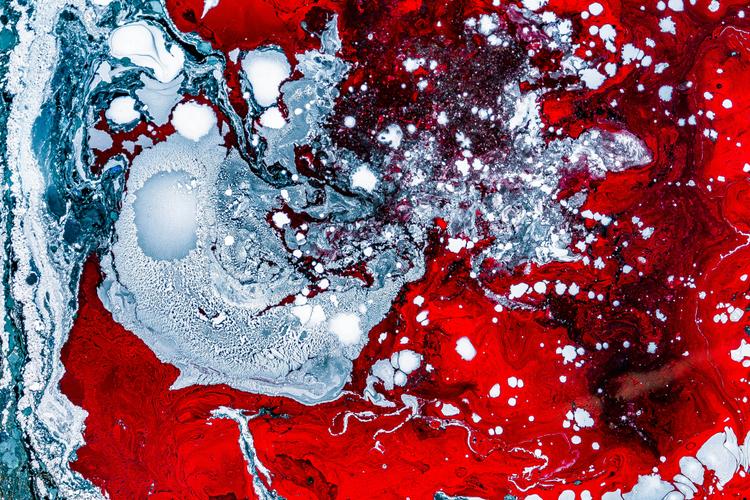
mTOR
Biomarkers
Aging
longevity
Lab Testing
Iron Overload and Cellular Aging: The Critical Interplay Between Iron and Copper in mTOR Signaling and Oxidative Stress
This review examines the interaction between iron and copper metabolism and their effects on cellular function and aging. It discusses iron's dual role as an essential nutrient and a contributor to oxidative stress, inflammation, and mTOR pathway activation, which are linked to age-related diseases like Alzheimer’s, Parkinson’s, cancer, and cardiovascular disorders. The review also covers how copper's control over iron can lessen these negative effects by lowering iron levels, thereby reducing mTOR activity, ROS production, and inflammation. Additionally, it explores how copper deficiency may worsen iron overload, complicating disease progression. By detailing the mechanisms of iron-copper interactions and their influence on disease, the review emphasizes the importance of balanced trace mineral levels to counteract age-related cellular dysfunction and promote healthier aging.
April 27th, 2024

Understanding the Aging Brain: The Role of Biomarkers in Predicting Neurological Health
As the human brain ages, it undergoes extensive structural and functional transformations that predispose individuals to neurodegenerative diseases. Recognizing these changes early is pivotal, as it could lead to timely intervention strategies. Current research is thus increasingly directed towards identifying reliable biomarkers that can predict the pace and nature of brain aging. These biomarkers are essential for crafting targeted interventions that could delay or alleviate the symptoms of age-related neurological conditions. This review consolidates recent progress in identifying such biomarkers and their efficacy in prognosticating alterations in brain health. We delve into the physiological changes characteristic of an aging brain and discuss state-of-the-art techniques for their quantification. Furthermore, we provide a critical analysis of the present research landscape while also projecting future trends. Our comprehensive review aims to shed light on how these emergent biomarkers could change our approach to managing neurological health in the elderly.
April 20th, 2024

Aging
science
health
Biomarkers
Understanding Aging Through Advanced Biomarkers: A Detailed Overview
Age, typically measured in years, does not fully capture the complex physiological changes that truly reflect an individual's health. This article examines the difference between chronological age and biological age, emphasizing the role of biomarkers in accurately assessing health. It explores key mechanisms of aging, such as genomic instability, telomere attrition, mitochondrial dysfunction, and altered cellular communication, which are crucial for understanding aging and associated diseases. Although measuring all these markers is ideal for gauging aging, practical challenges limit such assessments. The article highlights specific biomarkers that provide a clearer indication of health, discussing their significance in predicting health outcomes and guiding therapeutic development.
April 13th, 2024

rapamycin
Exploring Rapamycin's Potential Role in Managing Menopausal Symptoms
This review article investigates the potential of rapamycin, an mTOR pathway inhibitor, in alleviating symptoms associated with menopause, a natural biological process signifying the end of menstrual cycles and marked by a range of physical and emotional changes. By examining the biological underpinnings of menopause, including hormonal shifts and their systemic effects, the article sets the stage for understanding rapamycin's mechanism of action. Specifically, it explores how rapamycin's regulation of the mTOR pathway may mitigate menopausal symptoms by influencing ovarian function and extending the reproductive lifespan. Drawing on animal studies and initial human research, the review assesses the evidence for rapamycin's efficacy in improving menopausal outcomes. This article contributes to the ongoing discussion on menopause management and the search for effective treatments, emphasizing rapamycin's role in addressing the challenges of reproductive aging.
April 5th, 2024
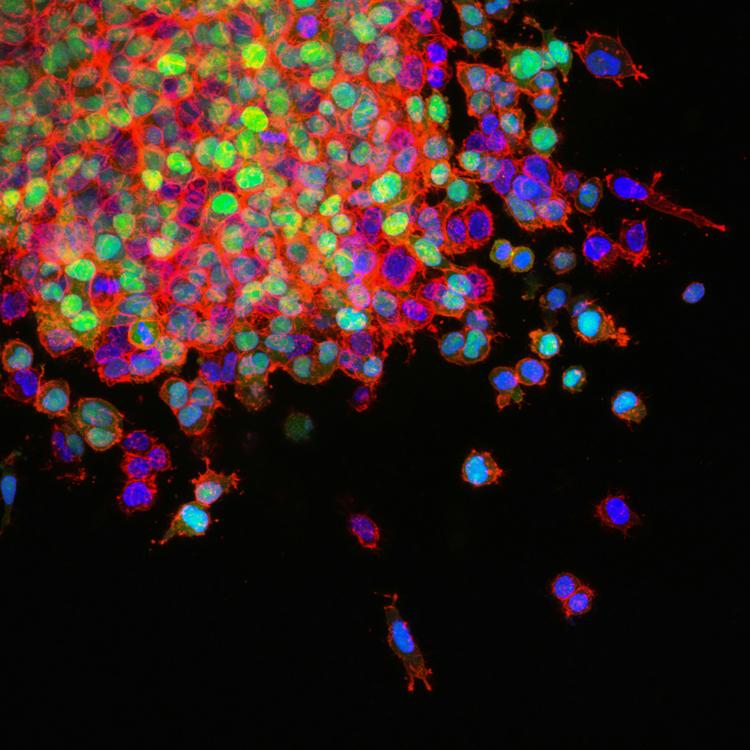
Defense against perceived threat: Revealing the restorative and healing potential of the Cellular Danger Response
The Cell Danger Response (CDR) epitomizes the body's sophisticated defense mechanism against a spectrum of threats, from environmental pollutants to biological stressors. This article delves into the intricacies of the CDR, unveiling its pivotal role in mediating the body's reaction to disturbances that could compromise cellular homeostasis and overall health. By exploring the multifaceted phases of the CDR, including initiation, signal transduction, and resolution, the article sheds light on how cells orchestrate a comprehensive response to mitigate threats, emphasizing the central role of mitochondria in this process. Further, it examines the dual nature of the CDR's impact on health, where its adaptative functions in response to seasonal changes and environmental challenges contrast sharply with its potential to precipitate chronic health conditions when aberrantly sustained. The discussion extends to the implications of persistent CDR activation in disease development, particularly how it can disrupt metabolic pathways, alter the gut microbiome, and affect developmental processes, potentially leading to conditions such as autism, ADHD, allergies, and asthma. By providing a nuanced understanding of the CDR's role in health and disease, this article underscores the importance of managing environmental and lifestyle factors that can inadvertently trigger prolonged CDR activation. It concludes by highlighting the significance of further research into the CDR for developing interventions that could moderate its activation, thereby reducing the risk of associated chronic diseases and improving health outcomes.
March 29th, 2024

mTOR
Aging
topical rapamycin
hyperfunction
Cellular Senescence
rapamycin
science
Autophagy, Cellular Senescence, and the Promise of Topical Rapamycin in Hair Regeneration
Hair loss, beyond its aesthetic implications, serves as a visible indicator of the broader, systemic aging processes occurring within the body. This research review article examines the potential of rapamycin, a known mTOR pathway inhibitor, in altering hair follicle dynamics to encourage hair growth by addressing two key cellular processes: autophagy and cellular senescence. Impaired autophagy and increased cellular senescence are pivotal in the deterioration of hair follicle health, leading to hair thinning and loss. We explore the molecular intricacies of these processes and their impact on hair follicle stem cells (HFSCs), highlighting the crucial role of the mTOR pathway in regulating autophagy. Rapamycin's inhibition of mTOR to enhance autophagy presents a novel approach for combating the adverse effects of aging on hair follicles, proposing a significant stride toward innovative hair restoration treatments. By synthesizing recent studies, this review underscores the relevance of autophagy modulation in not only advancing hair loss therapies but also contributing to the broader aging research field.
March 23rd, 2024

rapamycin
metformin
Aging
Nature's Design Paradox: Aging as an Inherent Software Flaw
Aging, that inevitable march towards senescence, has puzzled and intrigued scientists for centuries. Traditionally, our understanding of aging has centered on wear and tear, with the belief that our cells and tissues break down over time due to accumulated damage. However, a fresh perspective by Dr. João Pedro de Magalhães challenges this narrative, suggesting that the very processes responsible for our growth and development might also be driving our decline after we hit our reproductive prime.
March 16th, 2024

The Molecular Basis of Exercise and Neuroregeneration: Revelations from a Pivotal Blood Plasma Transplantation Study
Regular physical activity is crucial for mitigating neurodegeneration and enhancing cognitive function during aging, acting through both molecular and systemic channels to decrease inflammation, regulate mTOR signaling, promote autophagy, correct metabolic imbalances, and improve circulatory health, thereby maintaining neuronal health. This week's Research Review focuses on a groundbreaking study demonstrating that sedentary mice receiving blood infusions from exercise-trained counterparts showed significant cognitive improvements, indicating the potential transferability of exercise benefits. The review examines the alterations in gene expression leading to neuron growth, particularly spotlighting the protein GPLD1's role in emulating the cognitive and neurogenic advantages of exercise. This research highlights the neuroprotective effects of physical activity and its contribution to extending healthspan, providing fresh insights into the molecular foundations of exercise's defense against cognitive decline and suggesting innovative approaches to harness these benefits.
March 2nd, 2024

The Longevity of Muscle: Evaluating the Efficacy of Strength vs. Endurance Training in Preserving Muscle Function into Old Age
In this Research Review, we examine the nuanced effects of aging on muscle composition and the efficacy of strength versus endurance training as interventions to counteract age-related decline in muscle function and mass. Drawing upon a pivotal study featured in the Journal of Applied Physiology, the review delves into the comparative impacts of these exercise modalities on various aspects of muscular health, including strength, neuromuscular function, VO2 max, and muscle fiber composition. By highlighting the specific advantages of strength training in preserving fast-twitch muscle fibers and enhancing muscle strength, akin to younger physiological profiles, against endurance training's notable benefits in cardiorespiratory fitness, the analysis challenges traditional perceptions of aging. We argue for a multifaceted exercise approach as a crucial strategy in mitigating age-related muscle loss and redefining the aging process, underscoring the profound potential of targeted physical activity to influence healthspan and functional independence in older adults.
February 24th, 2024

Exercise
fitness
Zone 2 Endurance Training and Its Relationship With Longevity, Cardiovascular, and Musculoskeletal Health
For a decade, high-intensity interval training (HIIT) has dominated the fitness world, thanks to its touted ability to enhance health and performance. Recent advances have begun to explore the impact of much slower endurance-based training on metabolic health and potentially longevity. We will deep dive into this training practice to discuss how to incorporate this into your daily life and what's going on at the cellular, molecular & whole-body level when you train in zone 2 & 5. Lastly, we'll look at how these training modalities impact longevity, reduced risk of all-cause mortality, and the benefits of maintaining endurance exercise your entire life.
February 17th, 2024
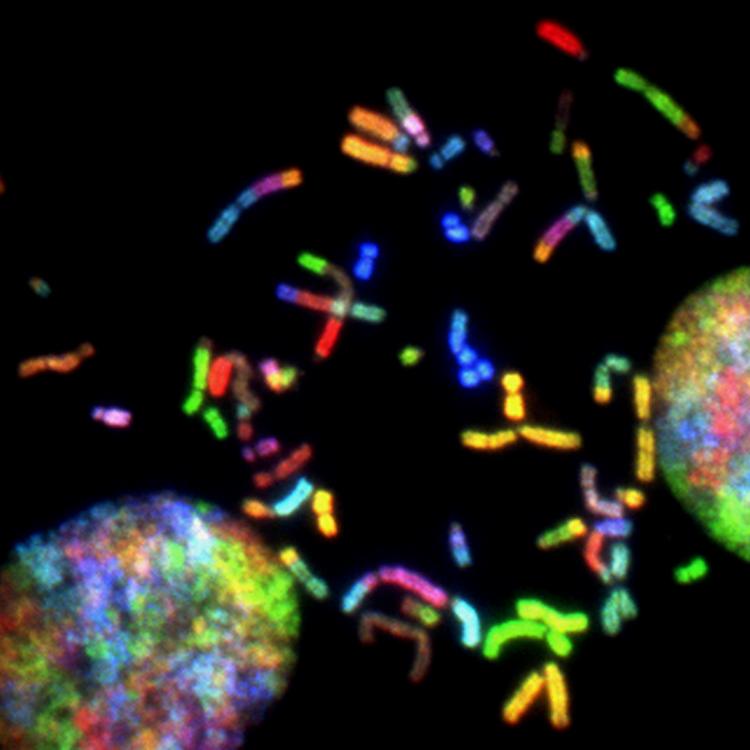
Acarbose
Microbiome
Telomeres
Aging
Anti-Inflammation
From Glucose Control to Gut Health: How Acarbose Bridges Metabolic Disease Management, Microbiome Science, and Aging Processes
Acarbose is widely recognized for its efficacy in managing Type 2 Diabetes (T2D) through blood sugar regulation. Yet, its value extends significantly into areas of gut health and longevity, unveiling a broader therapeutic potential. The gut microbiota, an integral part of our physiological ecosystem, is crucial for overall health, with imbalances affecting aging and life quality. This article explores Acarbose's impact beyond glucose control, highlighting its role in enhancing gut microbiota composition and supporting a holistic approach to health and longevity. By bridging metabolic disease management with microbiome science, Acarbose presents a promising avenue for extending quality life, marking a paradigm shift in our understanding and treatment of T2D and its associated conditions
February 10th, 2024
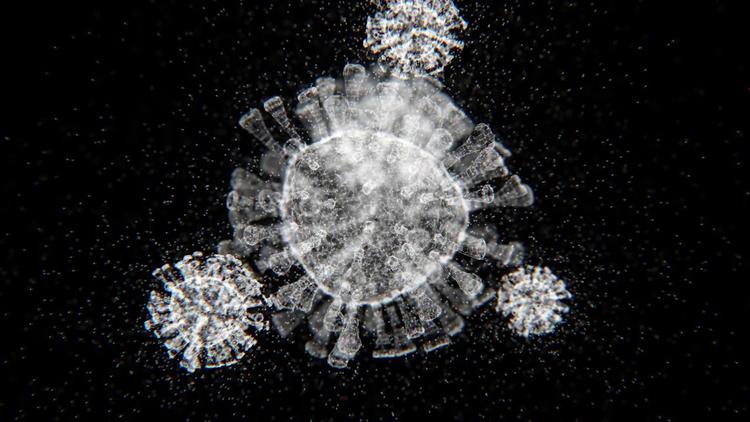
Anti-Inflammation
LDN
Understanding the Role of Low-Dose Naltrexone in the Context of Long COVID
In the aftermath of the COVID-19 pandemic, the medical community is grappling with the complexities of long COVID, a condition that leaves patients in a protracted battle with lingering symptoms. Low-Dose Naltrexone (LDN) has been identified as a potential therapeutic candidate due to its immunomodulatory and anti-inflammatory properties. In this in-depth analysis, Shreshtha Jolly from Johns Hopkins University's Department of Molecular Biology critically evaluates LDN's utility in managing long COVID. It specifically focuses on analyzing the molecular mechanisms by which LDN may exert therapeutic effects. Originally developed for addiction treatment, LDN's interaction with opioid receptors and subsequent modulation of the immune response suggests a novel approach to mitigating the long-term sequelae of COVID-19. This article provides a detailed examination of LDN's potential mechanisms of action, contributing to the understanding of its role in the management of long COVID and proposing a new direction for treatment strategies.
February 9th, 2024
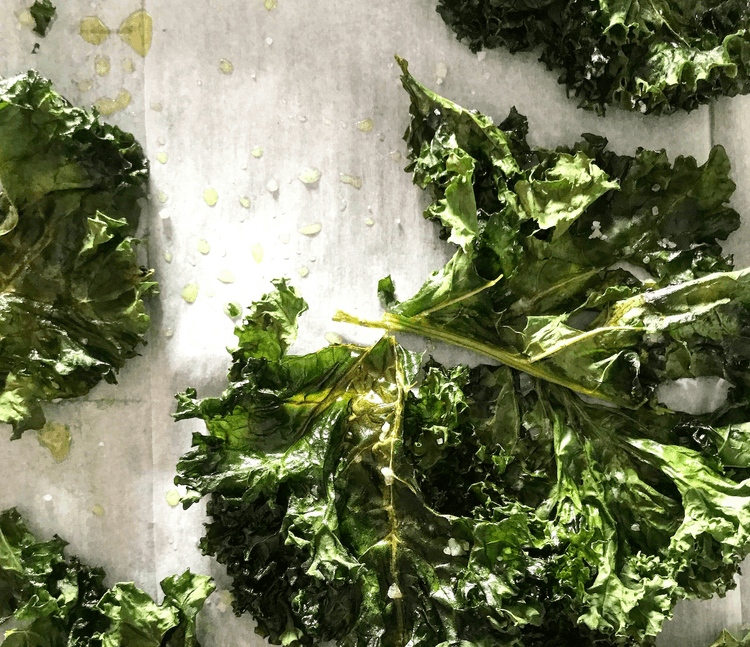
Anti-Inflammation
nutrition
Data-Driven Diets: How Dietary Fiber Influences Healthspan and Disease Resistance
This review article focuses on the critical role of dietary fiber in enhancing health outcomes and promoting longevity, underscoring its significance in disease prevention and lifespan extension. We synthesize existing research to explore the comprehensive effects of both soluble and insoluble dietary fibers on human health. Highlighting the importance of dietary fiber in improving digestive health, managing cholesterol levels, regulating diabetes, and maintaining overall gut health, this paper details how these indigestible carbohydrates positively influence metabolic processes, aid in weight management, and interact with the gut microbiota to generate beneficial short-chain fatty acids. Through a detailed case study on psyllium husk, we demonstrate the synergistic potential of dietary modifications alongside pharmacological approaches in the management of cholesterol, emphasizing the critical need to address the prevalent fiber deficiency in contemporary diets. Furthermore, we discuss the extensive public health implications of increasing fiber intake and outline the mechanisms by which dietary fiber can protect against various chronic diseases and enhance mortality rates. This article argues for a greater emphasis on fiber-rich foods within daily dietary practices, positioning dietary fiber as a powerful, yet underutilized, component in the pursuit of healthy aging.
February 3rd, 2024

Neurological Health
Cognitive Health
Multiple Sclerosis
Anti-Inflammation
The Multidimensional Benefits of Low-Dose Naltrexone
Navigating the complex terrain of chronic pain and fatigue syndromes unveils a myriad of intertwined physiological and neurological pathways. Central to this exploration is Low-Dose Naltrexone (LDN), a versatile therapeutic agent. In this in-depth review, we unravel the multifaceted mechanisms of LDN's action, focusing on its unique interactions with microglial cells in the brain and its modulation of opioid receptors. We delve into the emerging scientific evidence illustrating LDN's efficacy in mitigating pain, alleviating fatigue, and improving mental well-being in conditions like Myalgic Encephalomyelitis/Chronic Fatigue Syndrome (ME/CFS), neuropathic pain, and Complex Regional Pain Syndrome (CRPS). Additionally, we explore LDN's potential in addressing mental health challenges, particularly in anxiety and depression, offering new insights into its broader role in enhancing overall health and quality of life.
January 27th, 2024
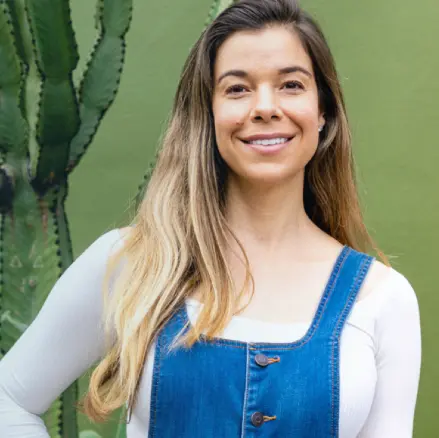
Cognitive Health
Neurological Health
Aging
Anti-Inflammation
cancer prevention
Dr. Rhonda Patrick
Exercise
Understanding the Mechanisms: A Comprehensive Analysis of Dr. Rhonda Patrick's Insights on Vigorous Exercise and its Impact on Longevity and Brain Health
In this analysis, Shreshtha Jolly from the Johns Hopkins Department of Molecular Biology provides a scientific exploration into the myriad benefits of vigorous exercise as highlighted in Dr. Rhonda Patrick's podcast "The Longevity & Brain Benefits of Vigorous Exercise." The article delves into the molecular and physiological impacts of High-Intensity Interval Training (HIIT), focusing on its profound influence on heart and brain health, cancer prevention, and the aging process. This comprehensive review aims to elucidate the significant role of vigorous exercise in enhancing overall well-being, marrying Dr. Patrick's expertise with cutting-edge research in the field.
January 20th, 2024

skin care
topical rapamycin
Cellular Senescence
science
The Science of Skin Senescence: Rapamycin's Role in Targeting the Root Causes of Dermal Aging
In a realm where the pursuit of health and longevity intersects with the cutting-edge of molecular biology, skin aging is not just a cosmetic concern but a bio-molecular challenge to be decoded and reversed. It is the visible clock of our biological age, ticking away in the form of fine lines, wrinkles, and elasticity loss, but its roots run deep into the cellular machinery of our body. In this detailed review, Shreshtha Jolly from Johns Hopkins University's Department of Molecular Biology takes us on a deep dive into the cellular underpinnings of dermal aging. Here, we dissect the complex interplay of DNA damage, cellular senescence, oxidative stress, and the intricate communication between various skin cells that contribute to the aging phenotype of the skin. This analysis isn't just about understanding the 'why' of skin aging; it's a quest to uncover the 'how' – how can we intervene, manipulate, and potentially reverse these underlying processes?
January 13th, 2024

rapamycin
How to Navigate Dosing Rapamycin for Longevity and Anti-aging
January 6th, 2024
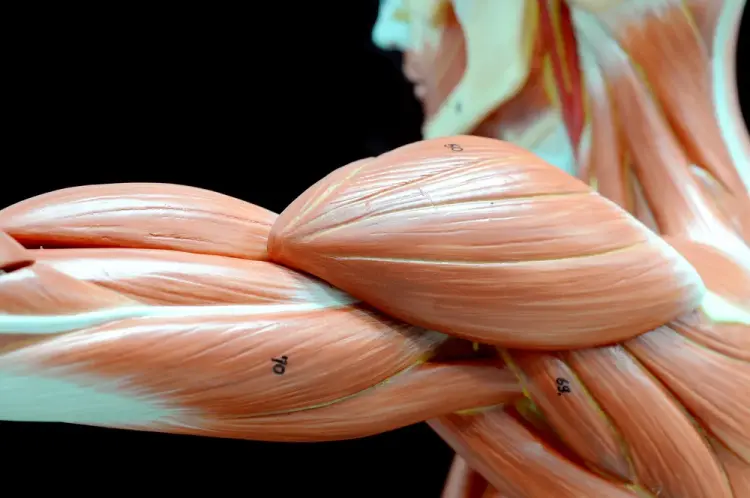
fitness
nutrition
science
health
The Boundless Anabolic Response to Protein Post-Exercise
For years, a pervasive myth in nutrition and fitness circles has been that the human body can only utilize up to 30 grams of protein in a single sitting. This belief has shaped dietary guidelines and influenced the eating habits of athletes and health-conscious individuals alike. However, new research is turning this notion on its head, suggesting that there may be no definitive upper limit to how our bodies respond to protein ingestion. This latest study marks a significant shift in our understanding of protein metabolism, particularly in the context of post-exercise recovery. It reveals that consuming increasingly larger amounts of protein leads to a corresponding increase in protein absorption, muscle protein synthesis rates, and overall whole-body protein balance. These findings not only challenge the long-held belief in a strict protein utilization limit but also open up new avenues in nutritional science and dietary planning. This article aims to delve into the nuances of this study, examining how it reshapes our understanding of protein metabolism and its practical implications for everyday nutrition and athletic performance.
December 30th, 2023
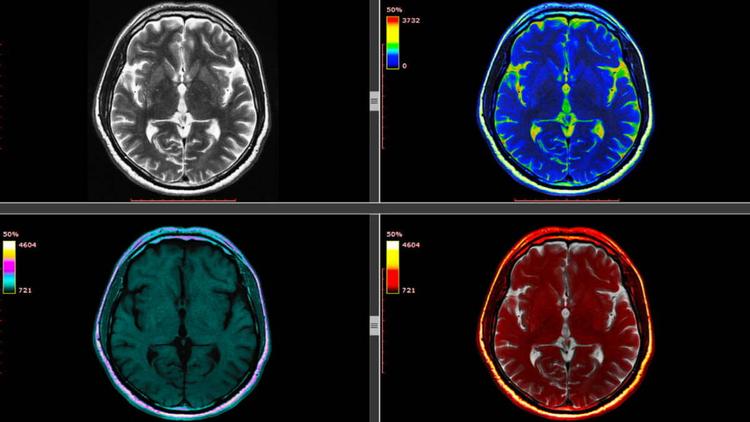
Cognitive Health
Neurological Health
longevity
Mindfulness and Meditation: Exploring the Neurobiological Impact of Meditation on Stress, Health, and Longevity
Meditation, long valued for its calming effects, has gained recognition as an influential tool for stress reduction and enhancing mental well-being. Recent research has begun to unveil its extensive neurological benefits, offering new insights into its effects on cognitive function and brain physiology. What specific neurological changes does meditation induce, and how do these contribute to enhanced longevity and cognitive function? In this week's Research Review, Shreshtha Jolly from the Johns Hopkins Department of Molecular Biology delves into these significant neurological processes. Her analysis explores how meditation optimizes neurotransmitter signaling and reduces inflammation, both vital for maintaining mental and physical health. Furthermore, she explores the role of mindfulness and meditation in stimulating neurogenesis and fostering the growth of neural networks in pivotal brain regions—a process of critical significance for cognitive health, particularly in the context of aging. Lastly, she examines meditation's influence on cortisol levels and the adrenal system.
December 23rd, 2023

Neurological Health
Aging
Anti-Inflammation
fitness
Dr. Rhonda Patrick
Cellular Senescence
science
Sauna
longevity
The Longevity Benefits of Heat: Dissecting the Science Behind Sauna Therapy for Optimal Healthspan
Recent advancements in longevity science have illuminated the significant role of saunas in enhancing overall healthspan and reducing stress, as well as neurodegenerative and cardiovascular diseases. In the last decade, a torrent of new data on the health benefits of heat stress has emerged, which establishes a dose-response relationship between regular sauna use and a reduction in disease prevalence. But what underpins this connection between sauna use, improved healthspan, and reduced mortality rates? Central to our examination is the biological concept of hormesis—the body’s adaptive response to the mild stress of heat exposure experienced during sauna sessions. We explore how this hormetic response, particularly the increased production of heat shock proteins (HSPs), is crucial in repairing damage linked to age-related diseases and contributes to reduced mortality rates and improved healthspan. The review provides an in-depth analysis of sauna practices, delving into their physiological and molecular impacts, and offering insights into optimizing sauna use by combining traditional methods with modern scientific understanding.
December 15th, 2023

Engineering a High-Performance Metabolism: Insights from Healthspan's Dr. Richard Cohen
In this Research Review, the focus is placed on understanding human metabolism, presented as the engine responsible for converting fuel into energy, essential for optimal bodily function. Dr. Richard Cohen, a physician with extensive experience in performance medicine, provides a detailed examination of metabolic dysfunction. By comparing the efficiency of a well-functioning metabolism to that of a high-performance vehicle, this article highlights the importance of maintaining metabolic health for overall well-being. Dr. Cohen's analysis addresses the mechanisms underlying metabolic dysfunction, its consequences, and strategies for maintenance and optimization. Through his expertise, the article aims to offer a comprehensive perspective on metabolic processes, emphasizing the significance of an efficient metabolic system in sustaining health and preventing disease.
December 9th, 2023

Announcement: FSA/HSA Payments Now Accepted at Healthspan
December 9th, 2023

Cognitive Health
Aging
Alzheimer's
Feeding the Mind: The Impact of Diet on Neurogenesis and Synaptic Plasticity in Aging
While much of our body ceases to grow after a certain age, our brains are a remarkable exception. They constantly evolve, giving birth to new cells through neurogenesis and building and rearranging their flexible cellular connections, known as synaptic plasticity. Recent advances in neuroscience have increasingly focused on understanding how our brain's growth and development shift with age and what proactive steps we can take to ensure optimal cognitive health. In this Research Review article, we aim to provide a more comprehensive and in-depth overview of the changes in our brains as we age. Additionally, we will explore the intriguing role of diet in maintaining brain health, illuminating how our food choices directly impact neurogenesis and synaptic plasticity in adulthood. This discussion offers insightful perspectives on potential dietary strategies to combat the aging process in the brain.
December 2nd, 2023

Parkinson's Disease
Cognitive Health
Microbiome
Acarbose
Exploring the Pivotal Role of Gut Dysbiosis in Aging and Parkinson's Disease
In the field of Neuroscience, recent research has focused on the potential role that the gut microbiome may play in the development of age-related neurological disorders such as Parkinson's Disease. Recent research has found that the development of Parkinson’s may have a surprising connection to the gut microbiome, a complex community of microorganisms living in our digestive tract. In this Research Review Article, we will explore how our gut changes with age and how these changes affect the development of diseases like Parkinson's. Additionally, we will uncover compelling strategies that can slow down aging and potentially ease Parkinson’s challenges by targeting the gut microbiome.
November 25th, 2023
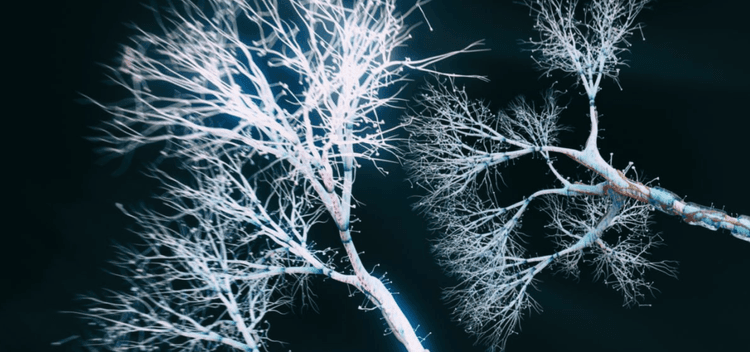
rapamycin
mTOR Signaling and Neurodegenerative Disorders: Exploring the Therapeutic Potential of Rapamycin
As the scientific community grapples with neurodegenerative disorders, the study of mTOR signaling provides a glimmer of optimism. But what's the connection between mTOR and debilitating conditions like Alzheimer's or Parkinson's? And how can we leverage this knowledge to stave off cognitive decline? In this article, we dive deep into the molecular intricacies of mTOR pathways and their potentially profound implications in neurodegenerative diseases. Moreover, we delve into the therapeutic promise of rapamycin, a molecule that may herald a paradigm shift in neurodegenerative disease management and prophylaxis.
November 20th, 2023
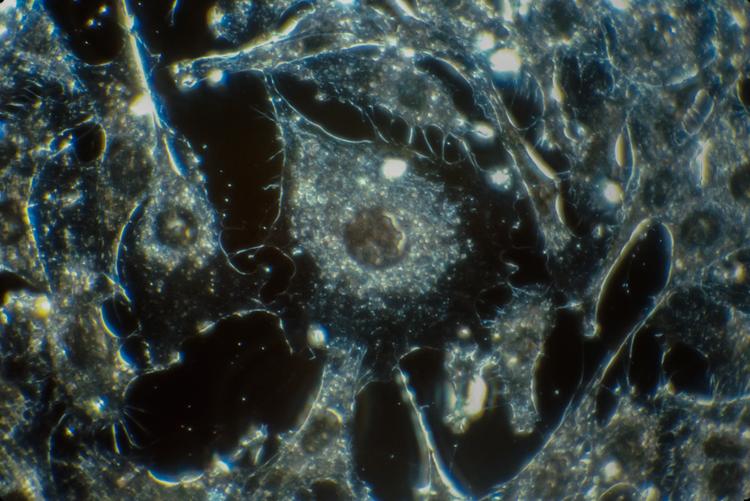
rapamycin
cancer prevention
The Role of Senescence in Crafting Cancer-Friendly Microenvironments
The incidence of cancer increases exponentially as we age. One link between age-related cancer and degeneration could be an inflammatory tissue environment driven by MTOR in senescent cells. In her pivotal 2010 research paper, "The Senescence-Associated Secretory Phenotype: The Dark Side of Tumor Suppression," Dr. Judith Campisi delves into how senescent cells create to a cellular 'microenvironment' favorable for cancer progression. In this article, we review Campisi's important insights and explore the potential of rapamycin to mitigate the cancer-promoting tendencies of these dysfunctional senescent cells.
November 19th, 2023

mTOR
autophagy
metformin
Taming Aging With Metformin: How A Diabetes Medication Can Change The Way We Age
If you have diabetes or know someone who does, it is likely that you are familiar with metformin—a first-line medication universally used in the treatment and prevention of type 2 diabetes (T2DM). In recent years, numerous studies have provided evidence that its benefits extend beyond blood sugar control, suggesting that metformin is capable of taming the detrimental effects of aging by reducing both inflammation and oxidative stress, and promoting autophagy. The positive health effects commonly observed in individuals with T2DM who use metformin, along with insights gained from studies in animals like worms and mice, have raised a compelling question: could metformin potentially serve as an anti-aging medication, capable of extending healthspan?
November 16th, 2023

Aging
Cellular Senescence
Telomeres
Telomeres and the Pursuit of Extended Lifespan
In this research review, we analyze the intricacies of telomere biology and its implications for human health and longevity. Telomeres, the 'timers' of cell life, gradually shorten with each division, leading to cellular senescence—making telomeres pivotal biomarkers in the study of aging. The focus of recent scientific inquiry has shifted to telomerase, the enzyme responsible for adding length to telomeres, thus offering a countermeasure to the aging process. However, the resurgence of telomerase activity is a double-edged sword; while it may hold the key to prolonged cell vitality and improved tissue regeneration, its aberrant activity is closely linked to cancer development, highlighting the complex role of telomerase in human biology. This article assesses the current landscape of telomerase research, acknowledging the enzyme's dualistic nature. We probe the intricate challenges that scientists face in leveraging telomerase for therapeutic benefits, emphasizing the need for caution and the profound implications of this research for the future of medicine.
November 10th, 2023

Multiple Sclerosis
rapamycin
Cognitive Health
mTOR
Examining mTOR's Influence on Multiple Sclerosis: A Scientific Review of Rapamycin's Therapeutic Potential
Even though more than 1.8 million individuals worldwide are diagnosed with Multiple Sclerosis, the exact cause of the disease remains unclear, with scientists believing that it arises from a complex interplay of genetic, environmental, and immunological factors. Recent studies have cast the spotlight on the mammalian target of rapamycin (mTOR) pathway, which is believed to play a significant role in MS pathophysiology. The heightened activity of mTOR is gaining recognition for its potential to influence the course of MS, presenting new therapeutic opportunities to modulate this pathway. A recent narrative review paper by Dr. Aigli Vakrakou from the University of Athens provides a comprehensive analysis of emerging approaches to the treatment of Multiple Sclerosis. The review provides a thoughtful analysis of mTOR's role within the cellular framework and its impact on the progression and symptoms of MS. In our comprehensive Research Review, we delve into the pivotal role of mTOR inhibition in MS. We present findings on how this inhibition can bolster autophagy, potentially leading to improved clinical outcomes for MS sufferers. Moreover, we examine the influence of mTOR regulation on T cells and the ensuing impact on immune system equilibrium, with the aim of decreasing MS-related symptoms.
November 3rd, 2023

rapamycin
Rapamycin's Horizon: What Upcoming Clinical Trials Reveal About the Future of Rapamycin
Over the past several years, rapamycin has captivated the scientific and medical communities with its promising potential as an anti-aging compound. Pioneering studies suggest that this molecule could play a pivotal role in delaying the onset of age-related diseases and possibly extending lifespan. However, as with many groundbreaking discoveries, its use in the realm of longevity is still shrouded in questions and uncertainty. The optimal dosage, long-term impacts, and the full scope of its therapeutic benefits remain areas of active research and exploration. In this review, we will delve deeper into rapamycin's intricacies, and highlight how new clinical trials are inching us closer to understanding its transformative impact on age-related health and longevity.
October 28th, 2023

rapamycin
Rapamycin Research and Clinical Trials: A Synthesis of Recent Scientific Findings
The mTOR pathway has emerged as a focal point in the realm of longevity science. When mTORC1's signals are controlled, it potentially paves the way for a longer, healthier existence. Contrastingly, mTORC2 reveals a more complex tale, with its suppression leading to metabolic complications and decreased survival rates in mice. Rapamycin, a compound frequently highlighted in our previous research reviews, targets this pivotal pathway. The intrigue around rapamycin is rooted in its dual nature: it might extend lifespan and counteract age-related ailments, but it also walks a fine line between the benefits of inhibiting mTORC1 and the risks tied to inadvertently suppressing mTORC2. In this comprehensive analysis, we delve deep into the latest research on rapamycin to elucidate its potential and influence on the most critical markers of longevity and healthspan—highlighting the vital nuances of how dosing influences its potential benefits and side effect profile.
October 22nd, 2023
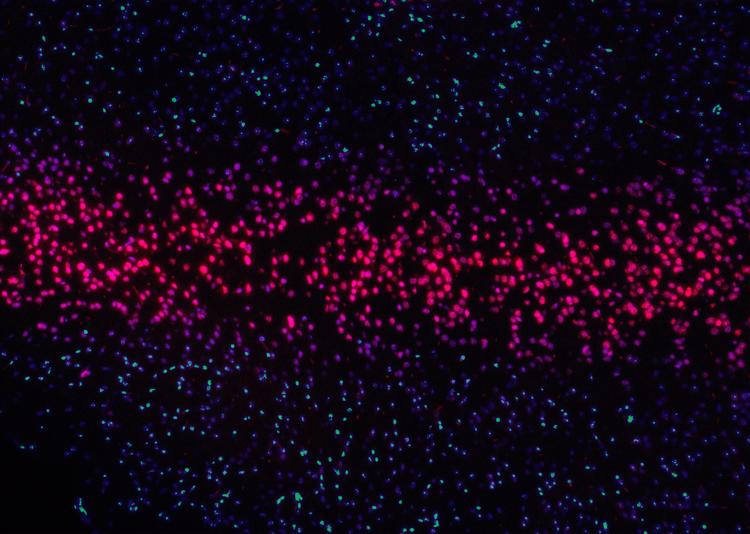
Cellular Senescence
The DNA Repair Paradox: Balancing Stability and Senescence
In our previous research review articles, we explored the intricate factors contributing to the aging process, with a specific focus on molecular pathways and underlying mechanisms. In this week's research review, we delve into the intriguing and paradoxical role played by DNA Damage Response (DDR) programming, which is crucial for maintaining DNA stability. However, with advancing age, the constant activation of this system can pose significant challenges to cellular health, leading to phenomena such as senescence, inflammation, and the onset of age-related diseases. We spotlight the research conducted by Qian, Zhou, Tanaka, and Takahashi, who have undertaken a comprehensive examination of the intricate interplay between protective responses and their paradoxical contribution to accelerated aging in later stages of life.
October 15th, 2023

rapamycin
Metabolic Aging: What Research on Metabolic Pathways Tells Us About Healthspan
In past articles, we delved deeply into the impact of cellular dysfunction on aging and the associated tissue degeneration. We focused on the role of senescent cells that accelerate age-related decline in tissue function. We have discussed in detail how the dysfunction of these damaged cells is characterized by toxic overactivity and growth, which compromises overall tissue function and accelerates aging. In this segment, we'll pivot to a detailed exploration of metabolic health, particularly the signaling pathways responsible for nurturing or inhibiting these dysfunctional cells. As we age, the cellular mechanisms that detect nutrient levels and gauge the energy status of cells start to falter. This article aims to shed light on the consequences of this metabolic decline and its interplay with aging.
October 8th, 2023

nutrition
Eat Less, Live Longer? Insights into the Geroprotective Effects of Calorie Restriction and Prolonged Fasting on Metabolic Health & Longevity
It is well-established that calorie restriction can improve metabolic health in multiple preclinical models, as well as delay or at least slow down the rate of biological aging by reducing the incidence of developing age-related pathologies. Other dietary manipulations, such as complete fasting and/or time-restricted feeding, have also gathered attention as alternative approaches to improve metabolic flexibility and lifespan. Yet, what is the actual impact of these dietary approaches, and how do they fare in real-world applications? A groundbreaking study published in Nature Metabolism by Professor Dudley Lamming’s research team seeks to decipher the mysteries surrounding these diets. We delve into the intriguing findings of this study, exploring the pros and cons of different calorie restriction models and their implications for human health and longevity, offering you a concise overview and critical insights into translating these dietary manipulations to everyday life.
September 30th, 2023
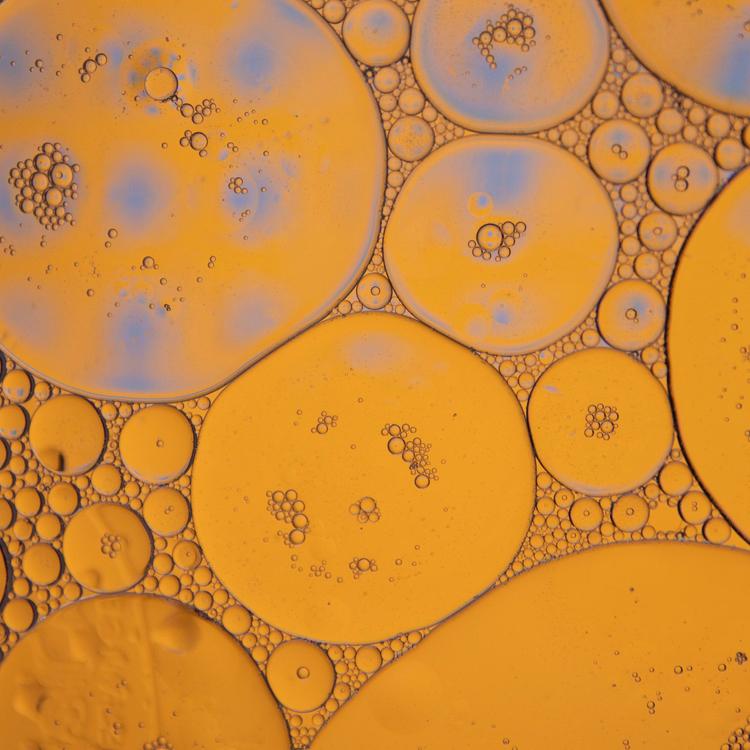
longevity
The Impact of Taurine on Lifespan: What Studies on Mice & Monkeys Tell Us About Humans
In this week’s edition of Healthspan Research Review, we delve deep into the latest research surrounding taurine and its correlation with aging. We investigate the diminishing levels of taurine as we age and dissect the intricate biochemical processes that determine the boundaries of taurine supplementation in restoring these levels.
September 23rd, 2023

acarbose
nutrition
Are the Longevity Benefits of Acarbose Rooted in Its Effect on the Gut Microbiota?
When the National Institute for Aging tested over a dozen longevity molecules, acarbose was one of five molecules shown to increase lifespan. The intrigue around acarbose stems from its dual function: it influences metabolic health and reshapes our gut microbiota. But how does this alteration in microbial balance translate to enhanced healthspan? This article probes the notion that the healthspan-promoting benefits of acarbose are intrinsically linked to its role in diversifying the gut microbiome and amplifying the production of short-chain fatty acids.
September 16th, 2023

longevity
How Skeletal Muscle Mass Impacts Cognitive Health
Sarcopenia, commonly associated with the frailty of advanced age, goes beyond mere muscle weakness—it holds potential implications for our cognitive faculties. But what links the muscle's decline to the brain's? The answer, it seems, could lie in the realm of myokines—specific chemicals our muscles dispatch during exercise, intricately connected to brain health. Factor in disturbances like insulin imbalances, protein metabolism anomalies, compromised mitochondrial functions, mounting inflammation, and a portrait of cognitive erosion emerges. In their recent review, Oudbier et al. dissect these connections. In this research review, we dive into their analysis, revealing the biochemical and physiological connections between skeletal muscle and the brain, and the pathophysiological mechanisms underlying cognitive decline.
September 9th, 2023

longevity
Understanding LDN's Impact on Chronic Inflammatory Diseases
The persistent battle against chronic inflammatory ailments highlights an unyielding hyperactivity of our immune system. But could the answer lie in LDN, a promising anti-inflammatory agent? In this comprehensive review, we dive deep into the mechanisms by which LDN modulates our immune response, revealing not just its interaction with opioid receptors, but its profound influence on endorphin levels and inflammation. Delving further, we scrutinize LDN's effects on three prominent chronic inflammatory diseases: Multiple Sclerosis, Fibromyalgia, and Inflammatory Bowel Disease (IBD).
September 2nd, 2023

rapamycin
fitness
nutrition
Rapamycin and Muscle Growth: A Review of the Glass Lab's use of Rapamycin to Reverse Sarcopenia and Anabolic Resistance
As we age, our bodies exhibit a reduced capacity to construct new muscle protein, even in the presence of anabolic stimuli like resistance exercise or protein intake. This perplexing state has captivated scientists for decades, yet the molecular mechanisms behind anabolic resistance have remained ambiguous. Emerging evidence from the pioneering lab of Dr. David J. Glass, MD, sheds light on a potential player in this enigma: the dysregulation of a signaling pathway known as mTOR. By delving into the intricacies of mTOR signaling, Dr. Glass and his team have begun to unravel the mysteries of anabolic resistance, providing insights into the cellular processes that underlie this physiological phenomenon.
August 8th, 2023

Anti-Inflammation
Endorphins and Anti-Inflammation: A Review of Low-Dose Naltrexone's (LDN) Potential in Extending Healthspan and Treating Chronic Diseases
As longevity science uncovers surprising connections between seemingly unrelated drugs and health outcomes, the curious case of Low-Dose Naltrexone (LDN) has captured researchers' attention. Originally designed as a treatment for addiction, LDN's impact on our biological systems has revealed unexpected benefits in modulating the immune response and fighting chronic inflammatory diseases. Through subtle increases in endorphin production and a cascade of anti-inflammatory responses, LDN presents an intriguing opportunity for enhancing overall well-being. In this article, we explore the multifaceted potential of LDN in extending healthspan, delve deeper into its proposed mechanisms of action, and examine its therapeutic applications in conditions like Multiple Sclerosis, Fibromyalgia, and Inflammatory Bowel Disease (IBD)—highlighting an unlikely candidate turned powerful ally in the pursuit of longevity and health.
August 5th, 2023

nutrition
longevity
health
science
From Thirst to Thrive: The Impact of Optimal Hydration on Aging and Wellness
In the quest for a longer, healthier life, we often focus on diet, exercise, supplements, and sleep, neglecting a seemingly simple yet surprisingly potent factor: hydration. While water appears modest, its role in our health is far from ordinary. Emerging scientific evidence reveals a fascinating link between optimal hydration and a multitude of benefits, including delayed aging, reduced chronic disease risk, and enhanced overall well-being. This article delves into the science behind optimal hydration, exploring its impact on various aspects of health and equipping you with practical tips to capture its potential for a longer, healthier life.
August 1st, 2023
.jpg?u=https%3A%2F%2Fimages.ctfassets.net%2Fzvzqa1d1gh0f%2F2ai6PJGdexSk1QBiPCVlrk%2F8f19ad9bd80a296006201c55c978ca56%2Fjoel-filipe-Lw7BruqPnJY-unsplash__1_.jpg&a=w%3D750%26h%3D1127%26fm%3Djpg%26q%3D75&cd=2023-10-23T19%3A58%3A28.957Z)
Analyzing Bryan Johnson’s Rapamycin Pivot
August 1st, 2023

rapamycin
cancer prevention
Examining Rapamycin's Role in Cancer Prevention: Insights from Dr. Mikhail Blagosklonny's Research
Mikhail Blagosklonny's theory of cellular hyperfunction has shifted our understanding of aging by proposing that it's not a result of cellular decline or damage accumulation but rather an overactive state of cellular metabolism. One of the most infamous examples of this is cancer. In a recent research perspective article, Blagosklonny outlined the role of rapamycin in slowing both the progression and delaying the onset of cancer. In this week’s research review, Jacob Rose, from the Buck Institute for Aging Research, discusses the multiple mechanisms of rapamycin that impede cancer development and formation.
July 30th, 2023
.png?u=https%3A%2F%2Fimages.ctfassets.net%2Fzvzqa1d1gh0f%2FS2NQwEGVUy4XpD6WReTme%2F76cb52fc8368ba1985fe3b7311c1828e%2FSlide_16_9_-_1__2_.png&a=w%3D750%26h%3D422%26fm%3Dpng%26q%3D75&cd=2023-07-25T23%3A20%3A02.056Z)
rapamycin
Breaking Down the Science of Longevity: A Discussion with Healthspan's Founder and CEO, Daniel, on the Wise Athletes Podcast
In a recent episode of the Wise Athletes Podcast, Healthspan's founder and CEO, Daniel, shared his story. He talked about how his research on mTOR-driven aging and his wife's lymphoma relapse led him to create Healthspan. Daniel also explained the scientific research that informs the rapamycin protocol offered by Healthspan.
July 24th, 2023

science
Decoding Disease: The Power of Advanced Microscopy Techniques
In this installment of the Science Literacy Series, Jacob Rose, from the Buck Institute on Aging, dives into the fascinating world of microscopy, charting its evolution from a simple tool for viewing thin tissue sections to a powerful instrument capable of illuminating complex cellular interactions. He explores how innovative staining techniques and fluorescence microscopy are revolutionizing our understanding of diseases, particularly cancer, and guiding the development of targeted treatments. This article aims to simplify the understanding of these advanced microscopy techniques and highlight their critical role in diagnosing diseases and conducting research.
July 22nd, 2023

longevity
The Science of Cold Exposure: Understanding its Impact on Human Health through Cold Water Swimming, Plunge Pools, and Cold Showers
The recent rise in interest around cold exposure therapy has not only gripped the health-conscious circles on social media, but has also sparked crucial conversations among experts. But what underlies the health benefits of cold exposure therapy? In this review, Dr. Ryan Marshall, from the Metabolic & Molecular Physiology Research Group at the University of Birmingham, explores the latest research findings on cold exposure to shed light on the science behind the benefits and the underlying mechanisms that make this therapy effective.
July 15th, 2023

rapamycin
How Rapamycin Optimizes Immune System Function and Fights Immunosenescent Cells
As immune function declines with age, a ripple effect ensues that accelerates aging. In an attempt to improve immune function, Dr. Joan Mannick's research has led her to examine the effect of mTOR inhibition on improving the aging immune system’s function. Mannick's trials have shown that the use of very low doses or intermittent doses of mTOR inhibitors actually enhances immune function. Despite this, the paradoxical nature of rapamycin's effects raises fascinating questions about the intricate relationship between immunity and aging. In this article, we explore the profound implications of Mannick's findings and delve deeper into the curious case of rapamycin—an immunosuppressant turned ally in enhancing immunity.
July 8th, 2023

Cellular Senescence
rapamycin
Exploring the Antagonistic Hallmarks of Aging and Potential Interventions
In the second part of our Hallmarks of Aging series, we explore the "Antagonistic Hallmarks," which include Cellular Senescence, Mitochondrial Dysfunction, Deregulated Nutrient Sensing, Dysbiosis, Chronic Inflammation, Altered Cellular Communication, and Stem Cell Exhaustion. We uncover how these processes intricately shape our aging trajectory. Additionally, we'll explore interventions that have shown promise in reducing the harm caused by these hallmarks, paving the way for a better understanding of potential strategies to slow down the aging process.
July 1st, 2023
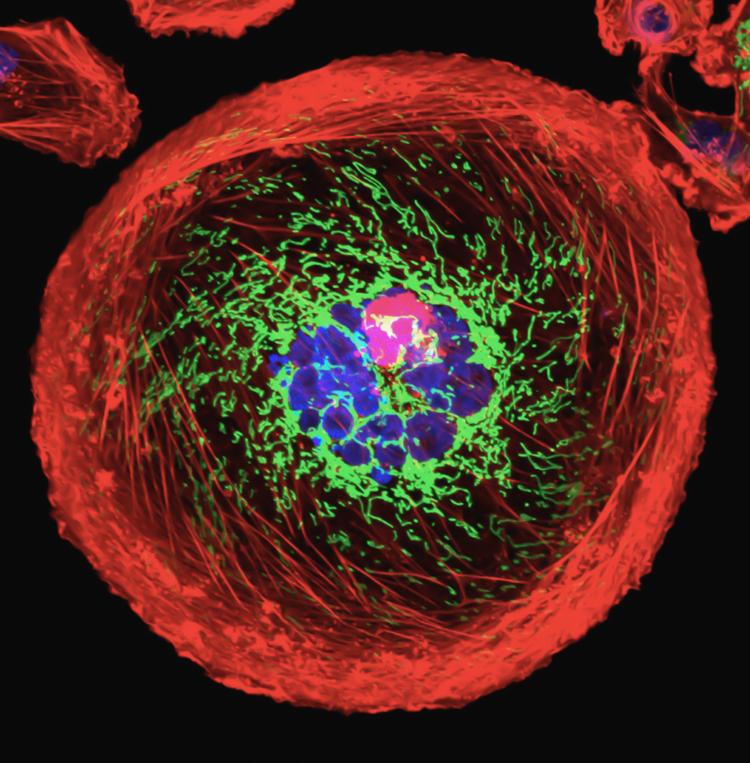
rapamycin
metformin
The Hallmarks of Aging: 12 Starting Points for Healthy Aging
The "Hallmarks of Aging" represent a crucial turning point in the scientific understanding of the aging process. These hallmarks, first articulated in a landmark 2013 paper and recently expanded, capture the key physiological and molecular shifts that occur as we age. In this two-part article, we'll delve into these revised hallmarks, focusing first on the 'Primary Hallmarks,' and the age-related pathways they affect. To begin, we will start with the “Primary Hallmarks” of aging: Telomere Attrition, Genomic Instability, Epigenetic Alterations, Loss of Proteostasis, and Disabled Macroautophagy.
June 24th, 2023

nutrition
glp-1
The Hidden Consequences: How GLP-1 Receptor Agonist Weight Loss Drugs Affect Lean Mass
Since GLP-1 was first discovered in the 1970s its role in human physiology remained largely unexplored for decades. However, in early 2005, the development of GLP-1 receptor agonists took the world by storm. Recent studies have shown their potential to significantly reduce body mass, particularly body fat in patients with obesity and type II diabetes. Despite this, Dr. Peter Attia has raised concerns about possible adverse effects on muscle mass. We explore Dr. Attia's perspective and delve into the relationship between GLP-1 and muscle mass in this piece.
June 16th, 2023

NAD
Rethinking NAD and Sirtuins: How Flawed Assumptions Reinforce Good Research Practices
Science and discovery are typically slow and painstaking processes, particularly when the goal is to produce factual results. The human tendency to seek swift solutions, especially in confronting mortality and disease, can lead to hasty conclusions. One example of this phenomenon was the pervasive belief in sirtuins as conserved longevity drugs—a viewpoint that has resulted in the considerable expenditure of time and resources. It's a cautionary tale for the scientific community—reminding us that the pursuit of knowledge should prioritize accuracy over expediency.
June 4th, 2023

rapamycin
nutrition
Exploring the Impact of High-Protein Diets on Longevity and Metabolic Function
A common belief is that a high-protein diet will facilitate an increase in muscle mass, strength, and function across the lifespan. However, is a high-protein diet still beneficial in the absence of any resistance-type exercise? Recent evidence from the world-leading laboratory of Professor Dudley Lamming at the University of Wisconsin-Madison has shown a high-protein diet, without any exercise, causes insulin resistance and an accumulation of white adipose tissue in as little as 18 weeks, even when matched for caloric intake. Here we discuss these provocative findings, their mechanisms, and how to prevent them.
May 6th, 2023

topical rapamycin
skin care
Inhibiting Skin Senescence with Topical Rapamycin (Sirolimus): A Novel Approach to Anti-Aging Skincare
A recent study investigated the potential of rapamycin to slow down skin senescence when applied topically as a cream. The results were striking—patients who underwent the treatment exhibited a significant reduction in senescence markers and an overall younger skin phenotype. But how does it work? The study found that the treatment either prevented cells from entering senescence or increased the clearance of senescent cells. These findings could have far-reaching implications for the broader quest to deaccelerate the aging process across the body.
April 29th, 2023

rapamycin
metformin
autophagy
The Paradox of Senescence: The Interplay Between Rapamycin, Autophagy, and Aging
Although inflammation represents a hallmark of aging, to grasp the underlying mechanisms of aging, we must delve deeper into the cellular state of senescence and the evolutionary pathways that culminate in a dysfunctional state. Indeed, the story of aging is fraught with paradoxes - the same cellular programming that once safeguarded us is ultimately responsible for driving us toward a state of dysfunction.
April 22nd, 2023

rapamycin
Exploring the Role of Senescent Chondrocytes in Osteoarthritis and the Promise of Rapamycin
As researchers continue to search for a cure for osteoarthritis, recent studies have uncovered a fascinating link between hypertrophic and senescent chondrocytes - the cells that make up our cartilage - and the progression of the disease. But what causes this degenerative condition, and how can we stop it in its tracks? In this article, we delve into the science behind these cranky chondrocytes and explore their pivotal role in this debilitating condition. We also explore the exciting potential of microparticle rapamycin therapy, which delivers the drug directly to the affected joints and encourages a shift towards greater joint health and improved mobility.
April 15th, 2023

rapamycin
hyperfunction
Rapamycin's Role as a Molecular Brake for Cellular Hyperfunction and Runaway Cells
Mikhail Blagosklonny's theory of cellular hyperfunction has shifted our understanding of aging by proposing that it's not a result of cellular decline or damage accumulation, but rather an overactive state of cellular metabolism. This idea challenges conventional wisdom and suggests that aging is a reversible phenomenon that can potentially be slowed down or even reversed. This shift in understanding has significant implications for how we approach the aging process.
April 8th, 2023

rapamycin
metformin
Unlocking the Link Between Nutrients, TOR Pathway, and Obesity: Can Rapamycin be the Key to Fighting Metabolic Syndrome?
New research reveals a surprising link between mTOR inhibition and the prevention of obesity and metabolic dysfunction. This complex story of mTOR's involvement in metabolic disorders unlocks new insights into the link between mTOR and obesity, and raises the potential for mTOR inhibitors like rapamycin to play a crucial role in preventing and treating these conditions.
March 25th, 2023
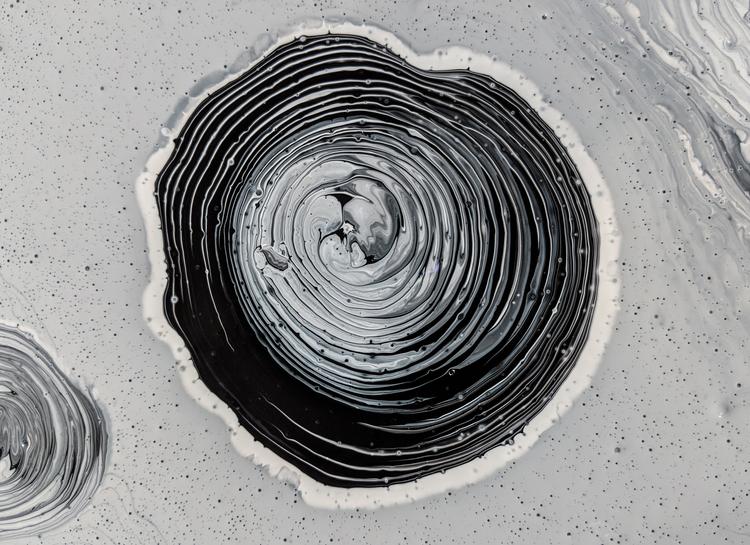
rapamycin
Unlocking the Bone-Building Potential of Rapamycin: How mTOR Inhibition Could Treat Osteoporosis
As researchers delved into the promising role of rapamycin in promoting bone growth, they sought to unravel the underlying mechanisms at play. The story of rapamycin as a bone growth molecule and treatment for osteoporosis centers around its capacity to subtly adjust bone cell activity, encouraging a shift toward greater bone formation and improved skeletal health.
March 17th, 2023

Dr. Rhonda Patrick
Alzheimer's
Dr. Rhonda Patrick on DHA in Phospholipid Form for Alzheimer's Prevention in APOE4 Carriers
Dr. Rhonda Patrick proposes a mechanism for the phospholipid form of DHA to play a role in the prevention of APOE4-associated Alzheimer's Disease.
February 2nd, 2023
.jpg?u=https%3A%2F%2Fimages.ctfassets.net%2Fzvzqa1d1gh0f%2F2ai6PJGdexSk1QBiPCVlrk%2F8f19ad9bd80a296006201c55c978ca56%2Fjoel-filipe-Lw7BruqPnJY-unsplash__1_.jpg&a=w%3D750%26h%3D1127%26fm%3Djpg%26q%3D75&cd=2023-10-23T19%3A58%3A28.957Z)
rapamycin
acarbose
Exploring the Anti-aging Potential of Acarbose and Rapamycin: Insights from the NIA Interventions Testing Program
When the NIA tested over a dozen longevity molecules, acarbose was one of five molecules shown to increase lifespan, but how does it work? The story of acarbose as a longevity molecule lies at the intersection of its ability to augment our metabolic health and remodel our gut microbiota.
December 21st, 2022
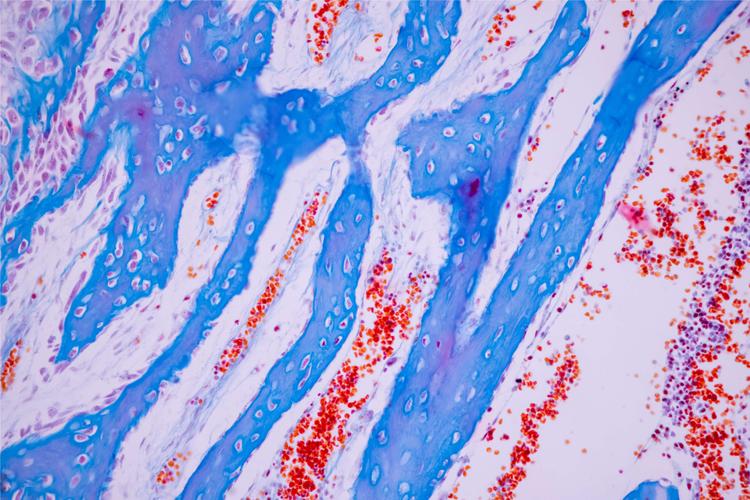
Cellular Senescence
Reducing Senescent Cell Burden in Aging and Disease
We'll be covering how you can reduce senescent cell burden with respect to aging and disease.
October 12th, 2022
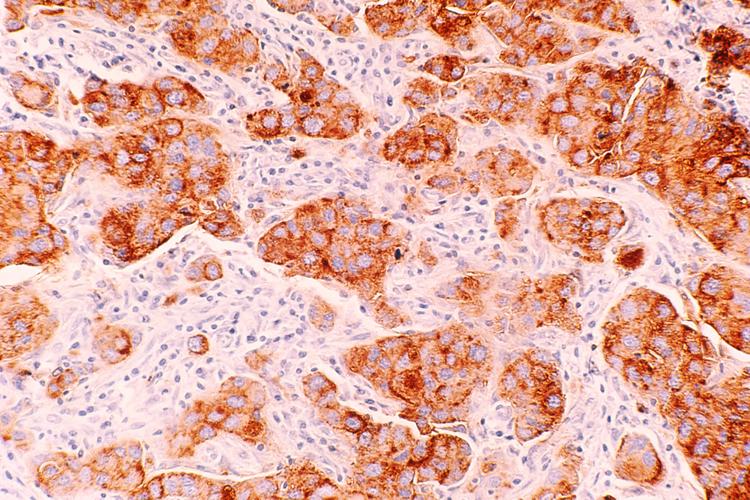
rapamycin
Rapamycin For Longevity: series 4 part 2
The fourth installment of our Rapamycin for Longevity series where we explore rapamycin and its effect on human longevity. In series 4 we go over the paper "Effect of rapamycin on aging and age-related diseases - past and future" written by Ramasamy Selvarani, Sabira Mohammed, and Arlan Richardson
September 29th, 2022

rapamycin
Rapamycin For Longevity: series 4 part 1
The fourth installment of our Rapamycin for Longevity series where we explore rapamycin and its effect on human longevity. In series 4 we go over the paper "Effect of rapamycin on aging and age-related diseases - past and future" written by Ramasamy Selvarani, Sabira Mohammed, and Arlan Richardson
September 29th, 2022

rapamycin
acarbose
Short term treatment with a cocktail of rapamycin, acarbose and phenylbutyrate delays aging phenotypes in mice
Pharmaceutical interventions with regards to aging requires targeting multiple pathways, thus there is rationale to test combinations of drugs that target different but overlapping processes. A multifaceted approach to treatment of aging in order to determine if combining drugs shown to extend lifespan and healthy aging in mice would have greater impact than any individual drug.
September 28th, 2022

rapamycin
Rapamycin for Longevity: series 2, part 1
A continuation of our Rapamycin for Longevity series exploring rapamycin and its effect on human longevity. Part 1 of 2.
September 28th, 2022

rapamycin
Rapamycin for Longevity: series 2, part 2
Part 2 of our second series on Rapamycin for Longevity, where we explore rapamycin and its effect on human longevity. Part 2 of 2.
September 28th, 2022
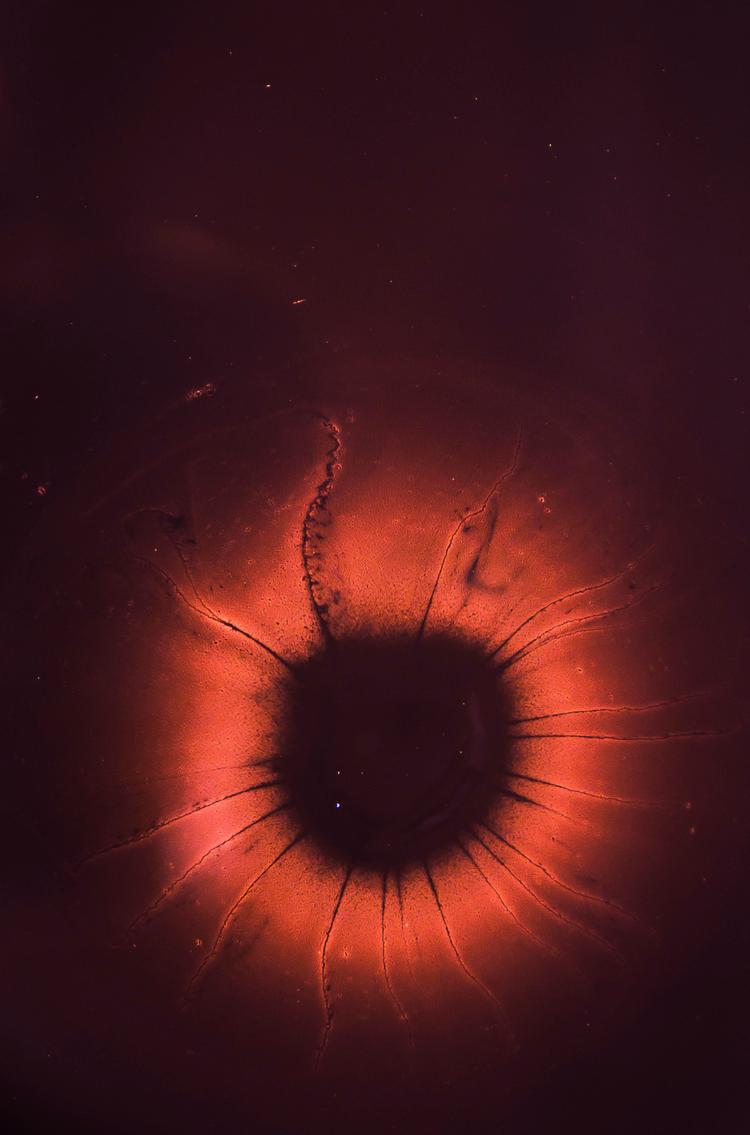
rapamycin
Rapamycin for Longevity: series 3
A continuation of our Rapamycin for Longevity series, where we explore rapamycin and its effect on human longevity. A brief explanation and overview of Harrison et al’s groundbreaking rapamycin study, aptly titled “Rapamycin fed late in life extends lifespan in genetically heterogeneous mice.”
September 28th, 2022

hyperfunction
rapamycin
Cellular Senescence
Cell senescence, Rapamycin and Hyperfunction Theory of Aging
Learn about cellular senescence and the hyperfunction theory of aging and how rapamycin treatment ties into these subjects.
September 27th, 2022

sleep
How Sleep Impacts Aging
Sleep is incredibly important for the human body as a whole as well as on the cellular level. What causes alterations in the quantity and quality of sleep and what are the consequences of these changes are quite important questions. What changes exacerbate aging and a more dysfunctional physiology and what changes are caused by aging that are detrimental to your health as well. We will cover the characterization of related changes in sleep structure on both the macro and micro scale and cover the differences between men and women when it comes to sleep and age.
September 27th, 2022
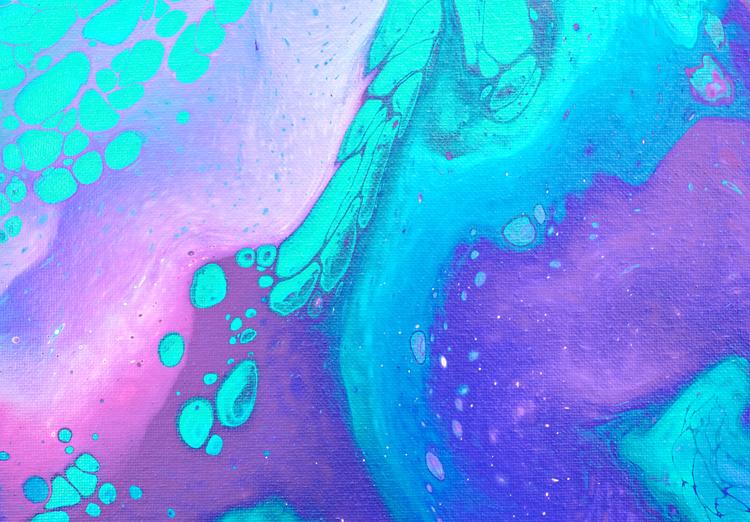
rapamycin
Rapamycin Delays Age-Related Hearing Loss
Rapamycin Added to Diet in Late Mid-Life Delays Age-Related Hearing Loss in UMHET4 Mice
September 26th, 2022
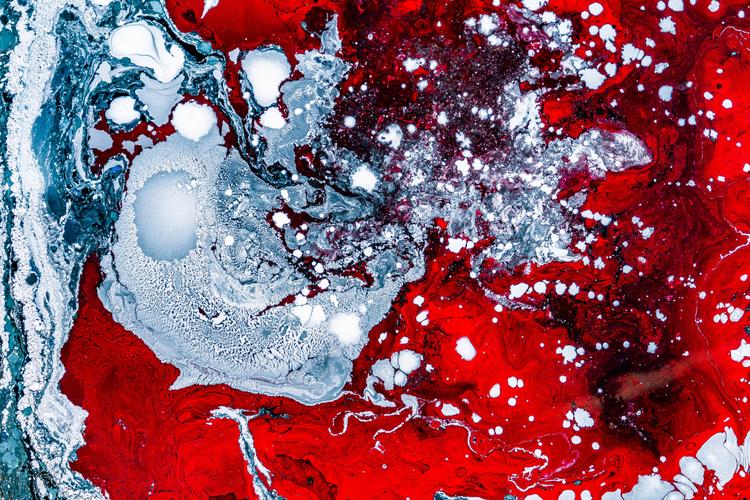
rapamycin
Rapamycin for Longevity: series 1
The first of our Rapamycin for Longevity series where we explore rapamycin and its effect on human longevity.
September 17th, 2022
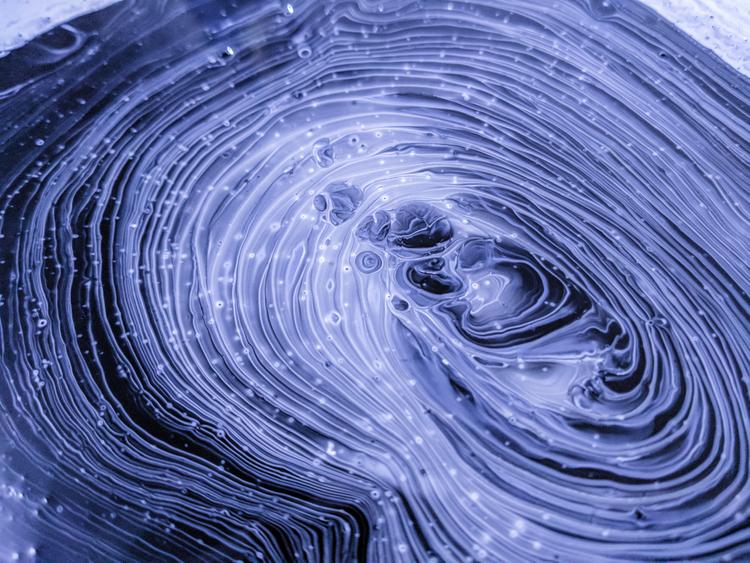
autophagy
mitophagy
Clearing out the Cellular Trash: The Importance of Mitophagy in the Removal of Damaged & Dysfunctional Mitochondria
As the lexicon of health, longevity, and anti-aging enthusiasts continues to evolve, one term - 'autophagy' - has solidified its place within the discourse. Nonetheless, a relatively lesser-known offshoot, 'mitophagy,' or mitochondrial-specific autophagy, remains more obscure despite its critical significance. Recent evidence has begun to show how critical this process is in maintaining proteostasis within a cell or tissue and how dysregulation of this process can result in the accumulation of damaged mitochondria.
June 11th, 2022


